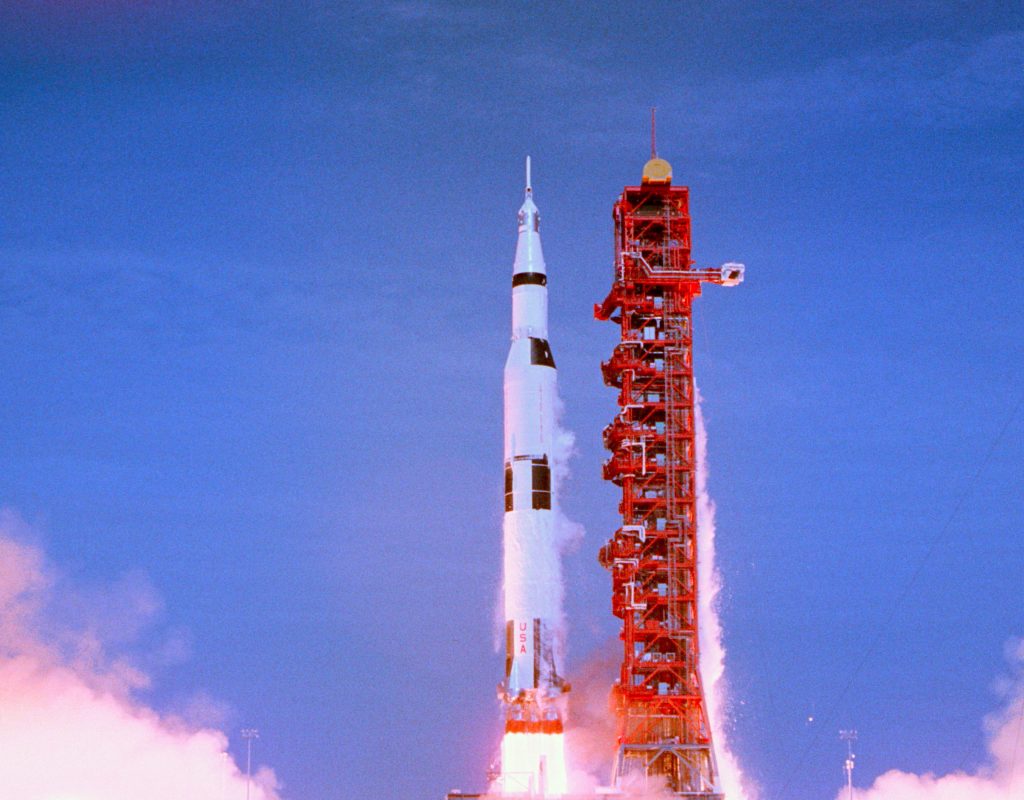I saw Apollo 11 in theatres several months ago, and recently the film has aired on CNN. It was gorgeous and fascinating and – in my eyes, at least – very unusual. I knew that whoever put it together had to have overcome a lot of obstacles, and beyond that, had managed to tell a very compelling story. I was excited to finally track down director/editor Todd Miller and we had a lengthy discussion of numerous fascinating aspects of making the film. This film has incredible scope and size – audio alone was over 18,000 of material – and Todd said that his choice of Adobe Premiere Pro as an NLE never let him down.
Todd Miller has also directed and edited Dinosaur 13, Scaring the Fish, and Gahanna Bill.
(This interview was transcribed with SpeedScriber. Thanks to Martin Baker at Digital Heaven)
This interview will also be available as a podcast soon on anchor.fm. But keep reading… great visuals in this article that you won’t get with podcast!
https://www.youtube.com/watch?v=3Co8Z8BQgWc
HULLFISH: I have spoken to colleagues in the field that just were blown away by Apollo 11. One of my editor buddies said that he would have been fine if the first shot in the movie just lasted 90 minutes.
MILLER: Believe me I think I probably could have done that.
HULLFISH: Tell me a little bit about your background as a documentary filmmaker. It looks like you’ve been producing, directing, and editing all of your projects.
MILLER: I started out with a documentary in film school, so I just kind of fell in love with the format. I’ve joked with people that I’m a fiction filmmaker, but my last two projects have been archival documentaries. I definitely approach the documentaries I’ve made in a “fiction way.”
I started out as a student film and kind of turned into more than that. My career goes back to the late ’90s. I was shooting on film — some 35mm, some 16mm — and then transitioned into video, so that tells you how long I worked on that project — probably about 4 years. After that, I did a fiction film. We optioned a screenplay and had three actors. We shot it in six days in upstate New York with two Canon XL2s, which had just come on the market. I edited that project and that was really challenging. I worked pretty closely with Michael Phillips at Avid because we had some technical issues with some of the advanced features etc. but that really got me into loving editing — multi-camera shoot — we had two cameras going all the time and just kind of a free-form style cinematography and it was a beast. It took me years to edit that.
That film didn’t really go anywhere. We made it just because we wanted to do something. We were all friends and just wanted to work on something that we could shoot quickly. Shortly after that, I started Dinosaur 13. That was planned to just be an art film. It was an excuse, really, to get out of New York. I had been taking a lot of editing jobs, directing jobs, producing jobs and I was just kind of spent.
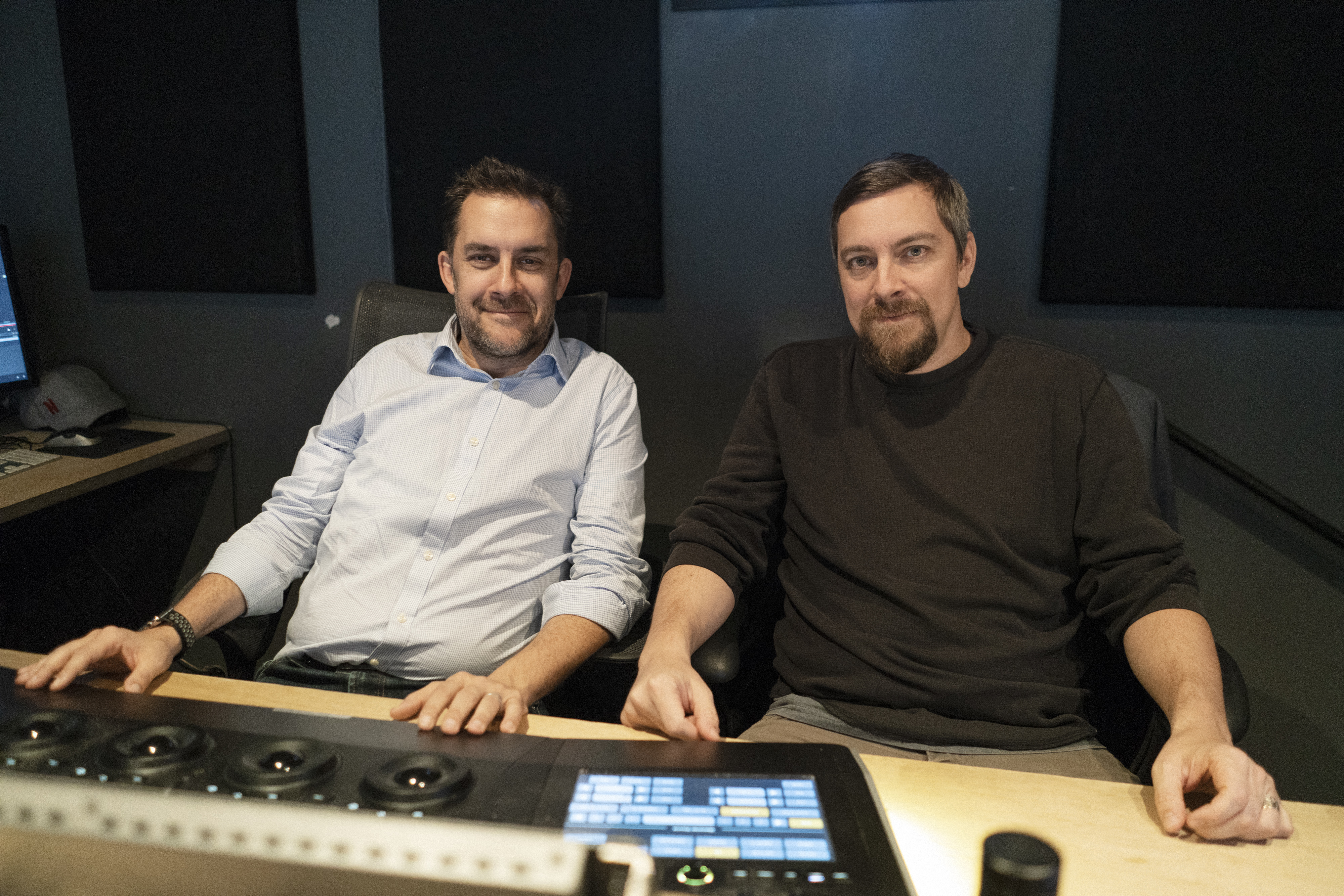
My producing partner, Tom, who is also a cinematographer, spent a lot of time out west, he and I both were shooting and I was editing as we were going along. That film took approximately three years to make and it turned into something more when we stumbled across one of our interviewees Peter Larson who had discovered this T-Rex. So that led to just a wonderful experience working with him and his group, showing this wonderful world of paleontology.
That film premiered at Sundance 2014, was acquired by Lionsgate CNN Films and then shortly after that we were trying to get back into some fiction filmmaking, but an opportunity came along with CNN films. They were interested in doing some short films for a new initiative and we were actually working on a project that was – oddly enough – looking at the provenance of one particular moon rock that was collected on Apollo 17, and that got us into the world of the archive and distribution network within NASA and the National Archives.
So when they approached us for the short film, I said, “I’ve got all this wonderful archive footage from Apollo 17 and it really became an editing experiment to see if we could tell that story using only archival materials. We just had a great time working on it. The team that I connected with on that project — a lot of the guys I have worked with for over a decade — became the backbone for the team that became Apollo 11 and certainly all of the people that we’d met within the NASA system and National Archives assisted us and generated Apollo 11.
HULLFISH: One of the things that intrigued me about this movie is that there are no interviews and there are no talking heads. For those who have not seen the film it is a very kind of fictional narrative approach to a documentary. It’s verite, but it doesn’t LOOK like verite.
MILLER: From early on we always had anticipated that there would be a version of the movie that was going to exist on IMAX screens in science centers and museums. I have always been a fan of the predecessor to IMAX — a lot of the TODD-AO formatted films from the 50s and 60s — that was showcased in New York in the past decade where occasionally they showed some of these films. A lot of them were shot in Cinerama. Not the big films like Ben-Hur but some of these films that were geared more towards science centers. They were shot on 65mm 5-perf. A lot of them were shot in Cinerama — three cameras, three projection systems — and they would do cutdowns of these for single screens — whether it was for Academy qualifications or just a different way to exhibit it.
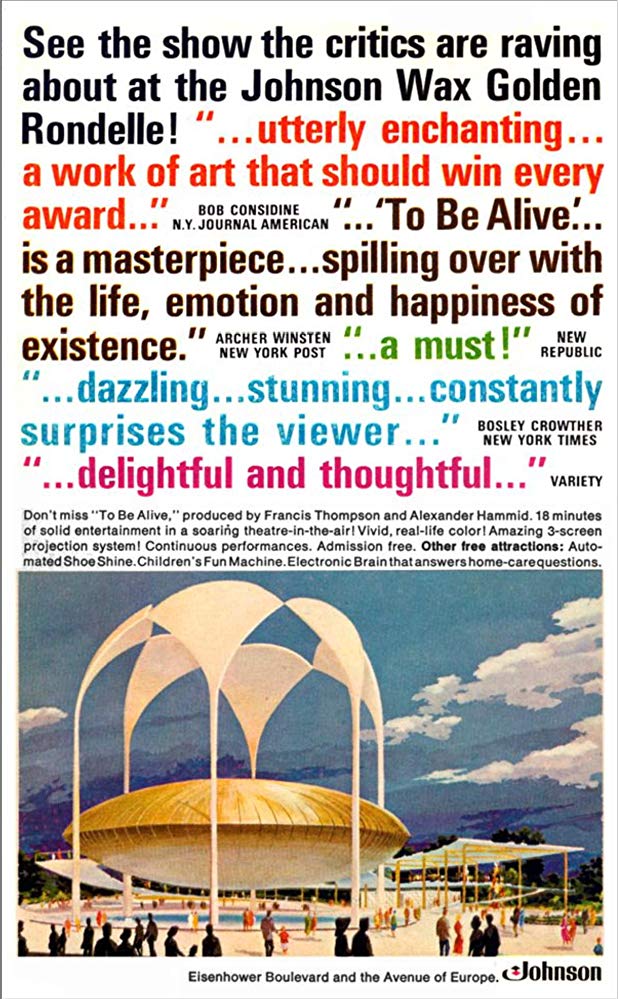 One particular filmmaker that I really fell in love with was Francis Thompson, who owned the Francis Thompson company here in New York. They were doing a lot of pretty avant-garde art films where they played with quasi-verite films but also a lot of fractured narrative stuff. They did a wonderful film called To Be Alive. 20 minute short that played at the New York World’s Fair in 65. They did a cutdown for that. It was shot in Cinerama and won an Academy Award. They were doing things with narrative that was very intimate — that would inform things in the late 60s moving into the 70s — films like Grand Prix and Woodstock — films that I loved as an editor, that played with parallel time, fractured narrative, split screens. So when we came across a lot of the footage and working with my archive producer who was supplying me with the best available footage, I instantly went back to that filmmaking style. It was something where they used more of a verite approach.
One particular filmmaker that I really fell in love with was Francis Thompson, who owned the Francis Thompson company here in New York. They were doing a lot of pretty avant-garde art films where they played with quasi-verite films but also a lot of fractured narrative stuff. They did a wonderful film called To Be Alive. 20 minute short that played at the New York World’s Fair in 65. They did a cutdown for that. It was shot in Cinerama and won an Academy Award. They were doing things with narrative that was very intimate — that would inform things in the late 60s moving into the 70s — films like Grand Prix and Woodstock — films that I loved as an editor, that played with parallel time, fractured narrative, split screens. So when we came across a lot of the footage and working with my archive producer who was supplying me with the best available footage, I instantly went back to that filmmaking style. It was something where they used more of a verite approach.
HULLFISH: Talk a little bit — for the people who haven’t seen the film — about what the film looks like and sounds like.
MILLER: Well the best example we have is that within the team, we jokingly call it “Dunkirk in Space.” In the sense that you’re dropped into a situation, you go on a trip, you don’t know if you’re going to come back or not and then you eventually do. So we wanted viewers to just be dropped in. In this case, it’s right as the mighty Saturn 5 rocket — on May 20th, 1969 — is being carted out to the pad at 39A in Cape Kennedy as it was called and then you just go on a ride. We have no narration. There are no talking heads. No present-day narration. We were given access to a ton of large format archival film, but equally as important was the audio that we were given access to. A lot of which had never before been heard.
Sitting right next to the flight director — back and to the left in the back of the mission control room — is what they call a public affairs officer and their job was to narrate the mission as it was happening live for the public, 24/7 during the 9 day mission on the NASA feed that was going out to the world. These guys were really the voice of the mission and they were doing blow by blow of what exactly was happening. It was really great for someone like me who had an interest in the subject matter but wasn’t necessarily an uber-nerd as I’ve become now, for sure, after making the film. But back then it helped to articulate a lot of the technical things that were happening or things you just couldn’t see because they were happening in space.
And obviously, there were no live TVs outside the spacecraft. So that became our narrative thread. These propel you into the mission and let you know what was happening. Obviously we had all the air to ground transmissions that people have heard — both within the command module and the lunar module — and then we also had the onboard audio, so when the guys were on the backside of the moon and they weren’t in communication with the earth, they would flip on an onboard recorder and we had access to all of those files. Probably the most important piece of audio that no one had heard before was — we were given access to eighteen thousand hours of Project Apollo audio from these mission controllers.
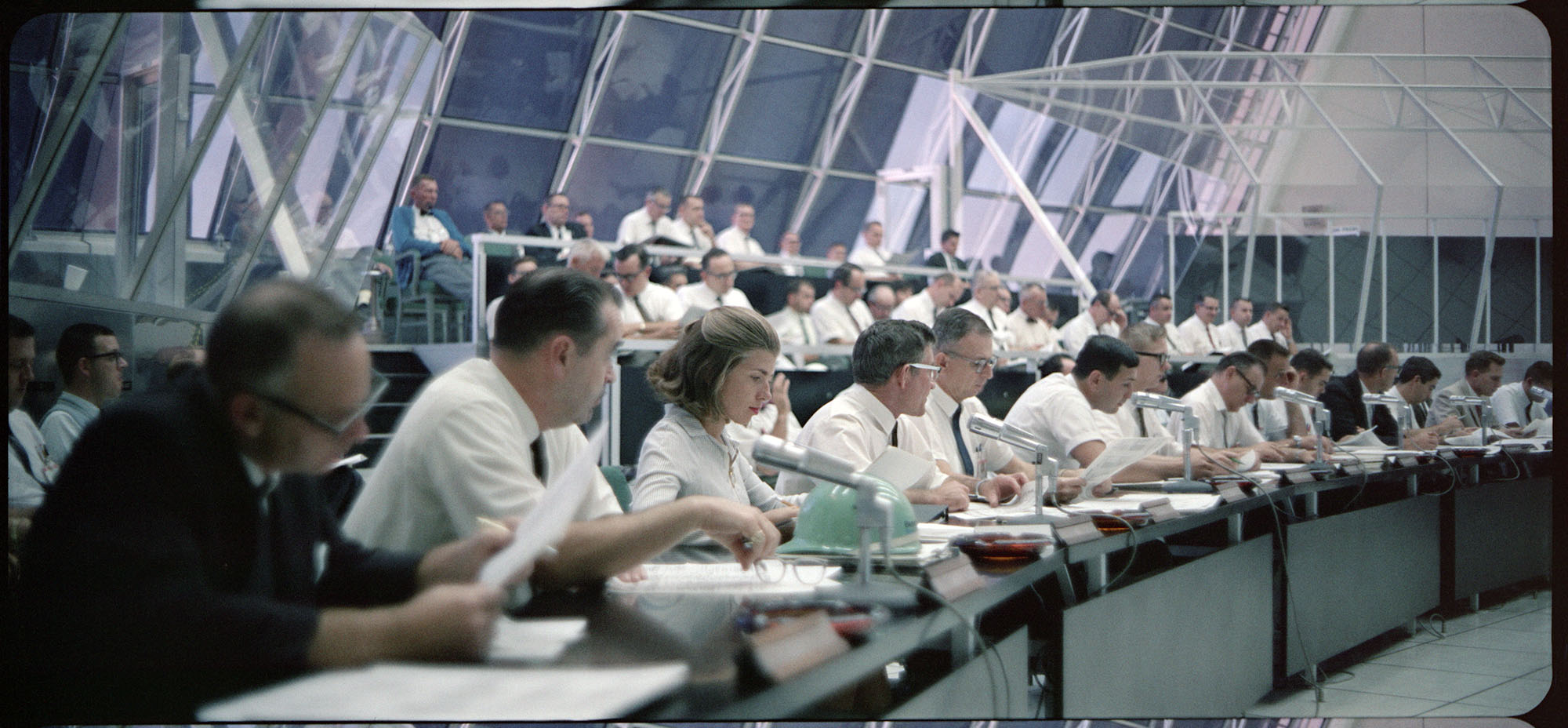 So if you can imagine: in mission control, you have 30 guys sitting in the front room and everybody that has a headset on is being recorded on an individual loop and that is recorded to 1” tape. Then in the back room, there’s an additional sometimes 30 to 40 tracks of audio being recorded. When we were given access to that — of the 18,000 hours of that, 11,000 hours of it was Apollo 11. When it was given to us, it wasn’t synced. There was some hum that was introduced in the early recordings. It was just a mess. It was actually digitized for a speech recognition project with the University of Texas Dallas.
So if you can imagine: in mission control, you have 30 guys sitting in the front room and everybody that has a headset on is being recorded on an individual loop and that is recorded to 1” tape. Then in the back room, there’s an additional sometimes 30 to 40 tracks of audio being recorded. When we were given access to that — of the 18,000 hours of that, 11,000 hours of it was Apollo 11. When it was given to us, it wasn’t synced. There was some hum that was introduced in the early recordings. It was just a mess. It was actually digitized for a speech recognition project with the University of Texas Dallas.
Thanks to some really brilliant work by Ben Feist — one of our consultants up in Toronto — he worked with a grad student out in Europe. They developed an algorithm to tackle all of this audio to sync it all up. So when I got it, I could actually look at it in the timeline and on/off every single channel. Sometimes I would have two hundred tracks at my disposal to tell the story. None of it was transcribed. So it was the work of all of us to try to determine exactly what was happening; when it was happening; if there was anything of interest; if there was anything new that we could build scenes around. That was how we started to actually piece the entire edit together and why it was a little different than what you know normally you would hear.
Believe it or not, there is a nine-day version of the film that exists. We started by just getting every single piece of available audio, still photography, both from the ground and also what the astronauts shot, the flight films, broadcast transmissions, everything related to the mission we wanted to throw into a timeline and see what we had and then just go through it and pick out our story.
HULLFISH: A nine-day version of the film hopefully broken down into more than one sequence!
MILLER: Yeah, we had nine sequences.
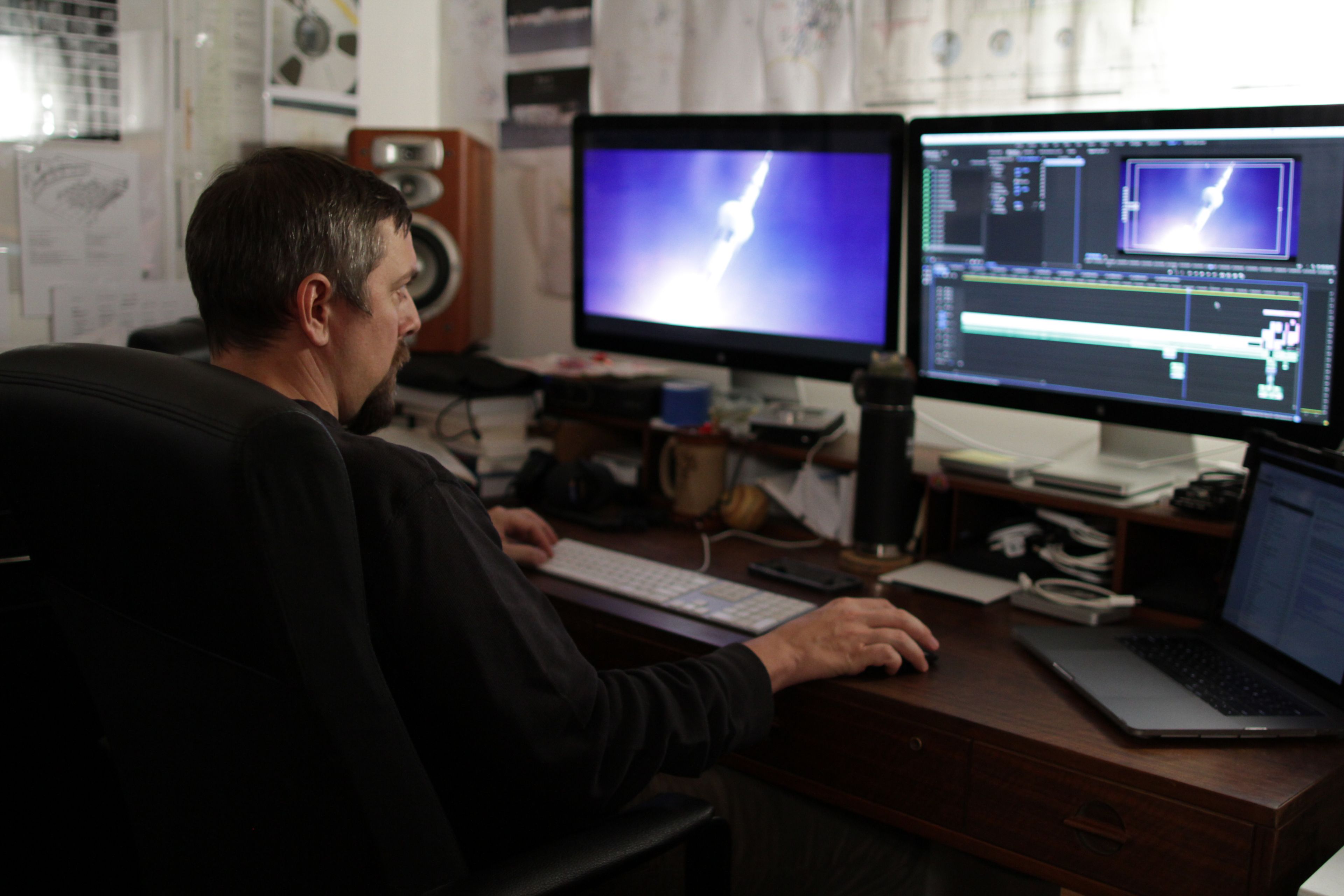 HULLFISH: Nine 24 hour sequences?!
HULLFISH: Nine 24 hour sequences?!
MILLER: Ben Feist had a website. I was halfway through the edit on Apollo 17 and I stumbled across his website which was apollo17.org and we immediately hit it off, but I said: “Why didn’t you build this thing six months early and you could have saved me a lot of time?” He’s actually building one for this film. It’s kind of a companion piece for the 50th anniversary in July, called apolloinrealtime.org so you can grab a sleeping bag and set your alarm clock and go on Ben’s website and see all the other materials.
HULLFISH: I talked about this amazing first shot. For those who haven’t seen the film or know much about your project, talk a little about the visual imagery that you’re dealing with.
MILLER: Initially we knew we had access to 16mm and 35mm. I had a little bit of frustration from having original negative from the Apollo 17 film that we did. I wasn’t really happy with the telecined results that we had. There were some shots that we were able to scan and there were others where the negative was in terrible shape. So I really wanted to rescan everything. I knew film scanning technology had come a long way. But I didn’t know to what degree. It just so happens a post-production facility — Final Frame, here in New York, which had done all my color grading for 10 years, was getting into the film scanning business.
They were working on some newer technologies and had convinced me that they could take a massive amount of film, scan it in a decent amount of time. At that time we were dealing with 16 and 35 and even some 8mm home video stuff and we were going to scan it all in up to 4k, which a lot of people think is kind of crazy for 16mm but through testing, we saw some results that looked promising. So that was the original intent and we were primarily dealing with National Archives. It turned into a research project.
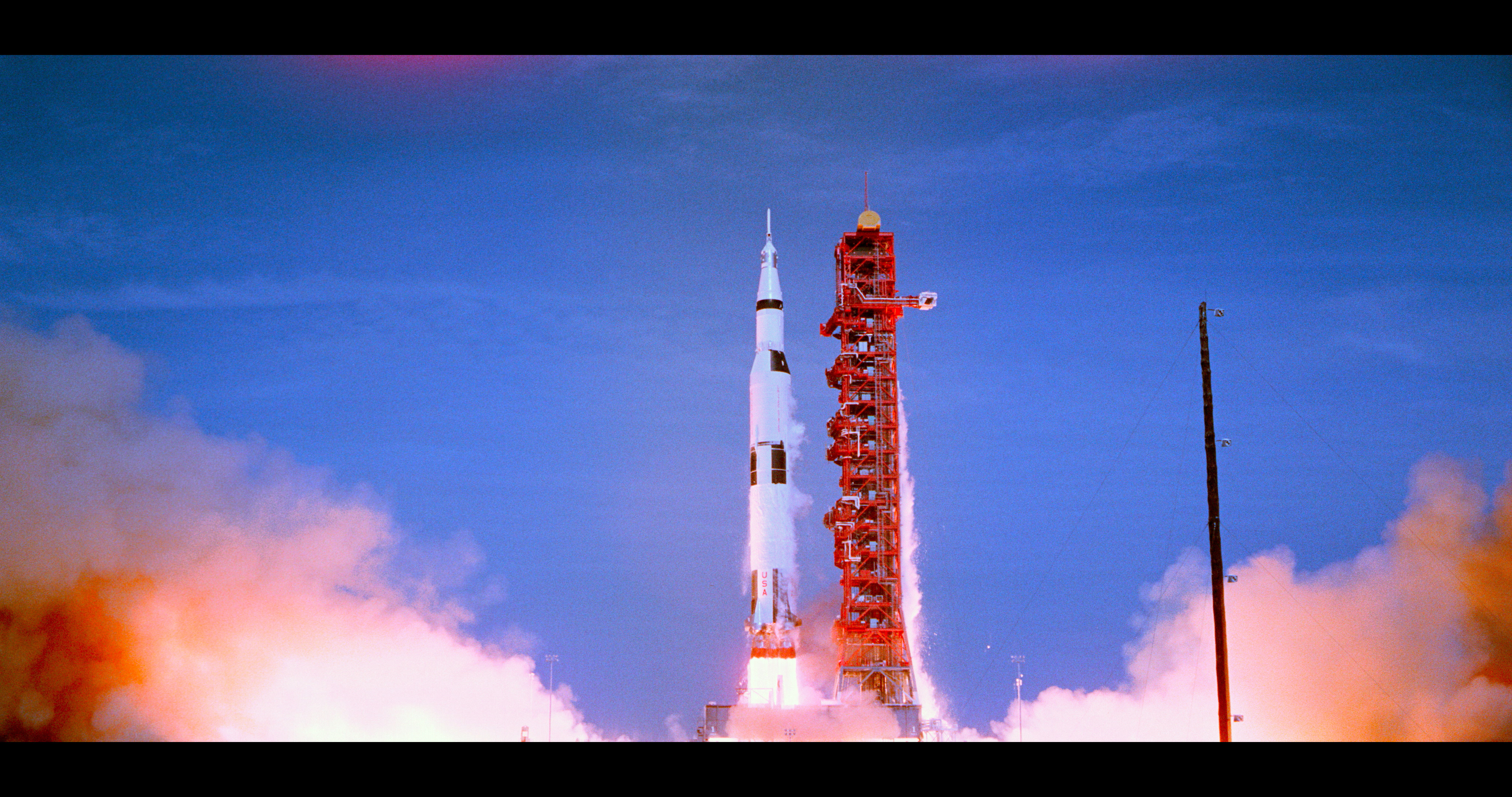 We really needed to quantify how much of this material was out there so it became really incumbent on the researchers there — working with our archive team and their archivists and curators — and to my surprise, no one had really tried to quantify how much Apollo material was there. A lot of it changed hands within the archival system. A lot of things were spread across the NASA network, but National Archives being the end repository for a lot of these materials seemed like a good place to start.
We really needed to quantify how much of this material was out there so it became really incumbent on the researchers there — working with our archive team and their archivists and curators — and to my surprise, no one had really tried to quantify how much Apollo material was there. A lot of it changed hands within the archival system. A lot of things were spread across the NASA network, but National Archives being the end repository for a lot of these materials seemed like a good place to start.
So a few months into the project I got an email in May 2017 from one of the supervisory archivists that said they had stumbled across this collection of large format film. It was the old school stuff I was talking about: 65mm five-perf. This was pre IMAX and they also had some 70mm 10 perf engineering films — commonly referred to as military grade one — nobody really had had the capabilities to deal with the military grade ones. So we entered into an agreement with the National Archives to basically scan these materials.
Initially, we were going to bring a team into their facility. We realized it was going to take like a million years to do it because we were only able to do it within the office hours when they were open, so we developed a plan to have a series of shipments in climate-controlled vehicles up the I-95 corridor from D.C. to New York over the span of months. We would get the materials trucked into Final Frame in midtown Manhattan and we would scan it. Several months before that actually took place, we did some test scanning with some of the different reels they had brought up.
I’ve heard Steven Spielberg describe seeing the dinosaurs the first time they were rendered on the computer for Jurassic Park and it was kind of one of those moments. We didn’t know what was on the reels. We knew that they were in good condition, but they really only said “Apollo 11” and some of them had the date of the launch which was July 16, 1969. But other than that we didn’t really know. One of the first reels that we put up was the Saturn 5 being rolled out to the pad. It was actually tails-out on the reels, so it was upside down, so we were craning our necks, but what really got me was that it was an aerial shot. So not only were there large format cameras documenting the launch, but we also had aerial shots, which was astounding. The very next reel was the suiting up shots — large format, unbelievable quality of Neil Armstrong, Buzz Aldrin and Michael Collins being suited up to go sit on top of the Saturn 5 and the bandwidth was very high coming off the scanner, so we immediately digitized a lot of it — only at that time in 4K, then we went to the DI room to watch it on the big screen. It was just one of those moments where everybody just stood there speechless. We were dumbstruck and that began the process of scanning all of that.
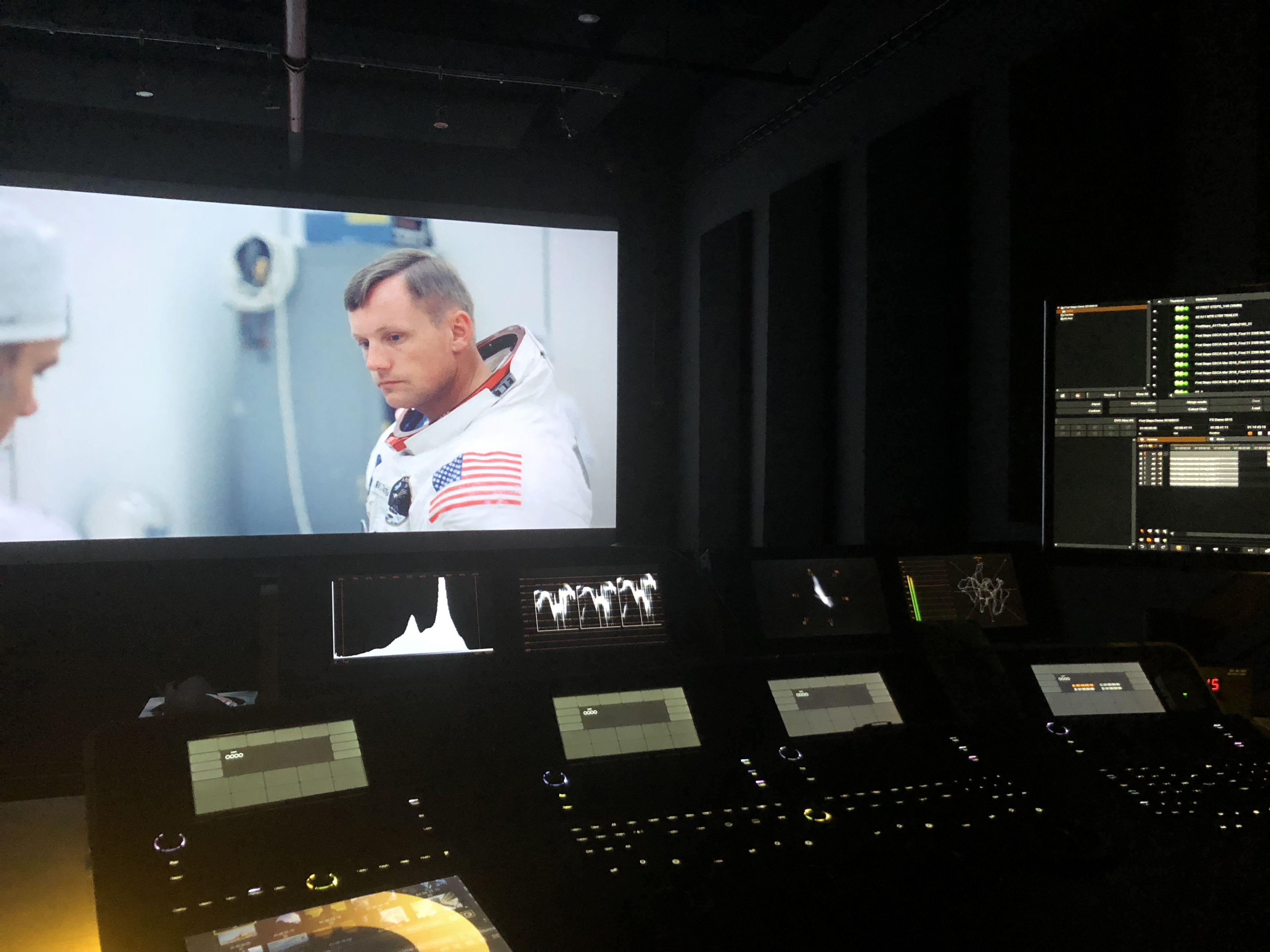
So ultimately we developed a prototype scanner with Final Frame hardware and software guys. It was capable of doing 16k, but we saw some diminishing returns obviously, dealing with storage solutions, so we settled on 8k for the majority of the 65mm and then for the 35mm and 16mm, we did 4k. Just like mission control, we had three teams working around the clock for months to get it all in. And then of course, you can imagine, from an editing standpoint, we had to deal with storage solutions. We had a security issue too in that we had the bulk of all these materials in one location, which was terrifying. Plus this was during the government shutdowns of 2018.
Sometimes we had the raw negative housed in the same location as the hard drive, so it was terrifying. A lot of sleepless nights.
I was working out of our offices, which were in Brooklyn, so I was across the East River, so about once a week we would copy over drives and ship them out of state so at least they would exist in triple locations in case anything happened. And then I began the work of dealing with 4k proxy files from all the 8k stuff and put the film together. I edited it all in Premiere Pro. I ended up having to do all the graphics myself, so I loved the integration with After Effects. I was doing a lot After Effects. It was really just creating placeholders before we got a big visual effects house to do all the graphics. The whole Adobe suite really worked well on this project. The proxies were ProRes 444 HQ. That was the vast majority of everything. We did have some still imagery that the astronauts shot. They shot 1,025 still images in 70mm — not to be confused with the 70mm film footage — Hasselblad images.
Once I got rough edits done, I would send a media-managed project back over to Final Frame and their on-line editors would conform based on my edit and would go back to the original 8k source files and those were integrated into the DI suite where we had a combination of Film Master and Nucoda. We also used Transkoder for all of our dailies and proxies and review files.
HULLFISH: Transkoder is what made the proxies from 8k originals and 4k originals?
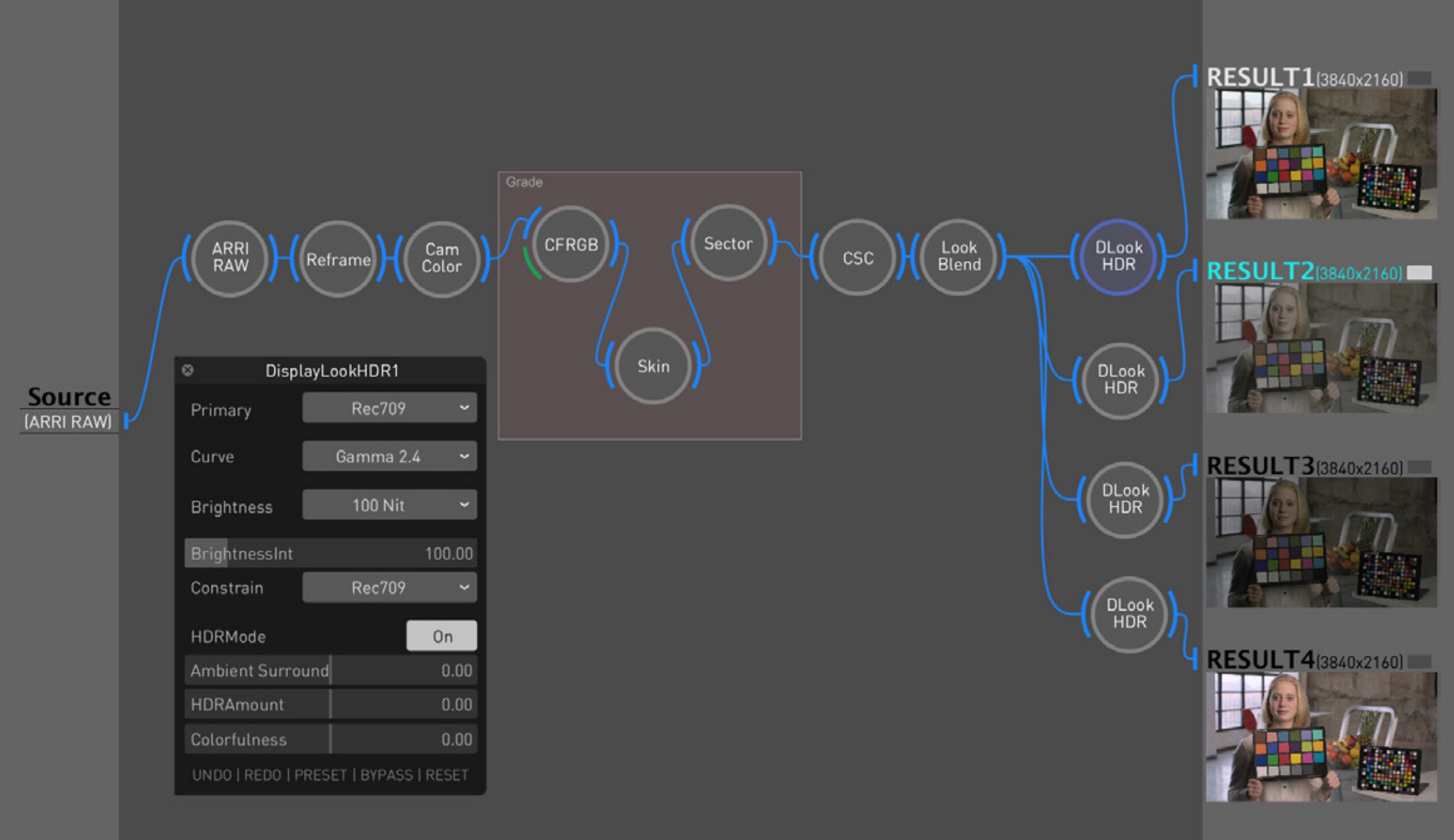
MILLER: That’s right. It’s just a node transcoder. Really robust. I personally have never used it, but that’s the piece of hardware or software that was used to create everything. Here and there, if we had review files, we used Resolve.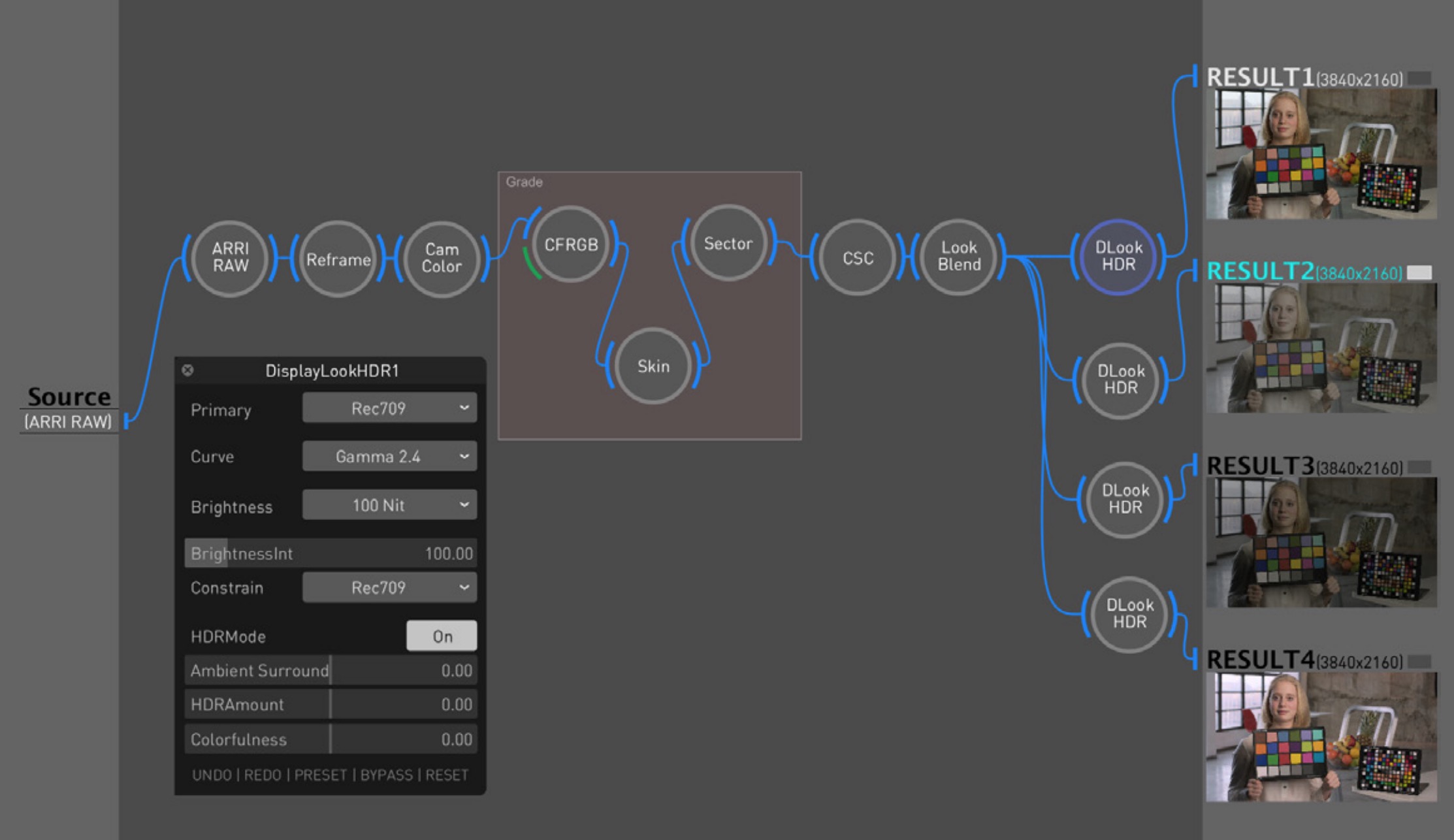
HULLFISH: How did you organize the project to be able to keep Premiere working smoothly? Did you break reels or stories or sequences into separate projects?
MILLER: It was tough at first. I set up an office at my house and then I had another set-up at work. I basically had mirrored drives at both places during the project. I was surprised at how robust Premiere was. I thought for sure I would have problems but I really didn’t encounter anything. I broke down the entire film into days, so it’s really eight days “and change.” So there were nine different sequences that represented each day. The great thing about working on a film like this was that our script was the transcripts — which were thousands of pages long — but gave you a backbone in which to at least understand what was going on in the mission from mission control’s vantage point. We were telling the story from the people that were participating at mission control and then also from the astronauts’ POV.
It started off very simply as version one and every single time I would change something I would save the new version and every day that I edited I would save a new project and that kept me in check but also allowed me to streamline things. I’m very diligent when I edit. I don’t really rely on all the tools that Premiere Pro has. I like to go through footage time and time and time again. I don’t use assistants, so I just saturate myself and expose myself to the footage. I’m lucky in that I tend to only work on projects every few years, so I had the luxury of time. I could go in and basically create media-managed projects each time I would save something, so every morning I would wake up, save a new project, go in and just kind of clear out the dustbin of things that I didn’t need. I do not recommend that for young editors because if you don’t know what you’re doing. But that makes it efficient where I can open up a sequence or a project and be able to work on it without ever stuttering or having issues.
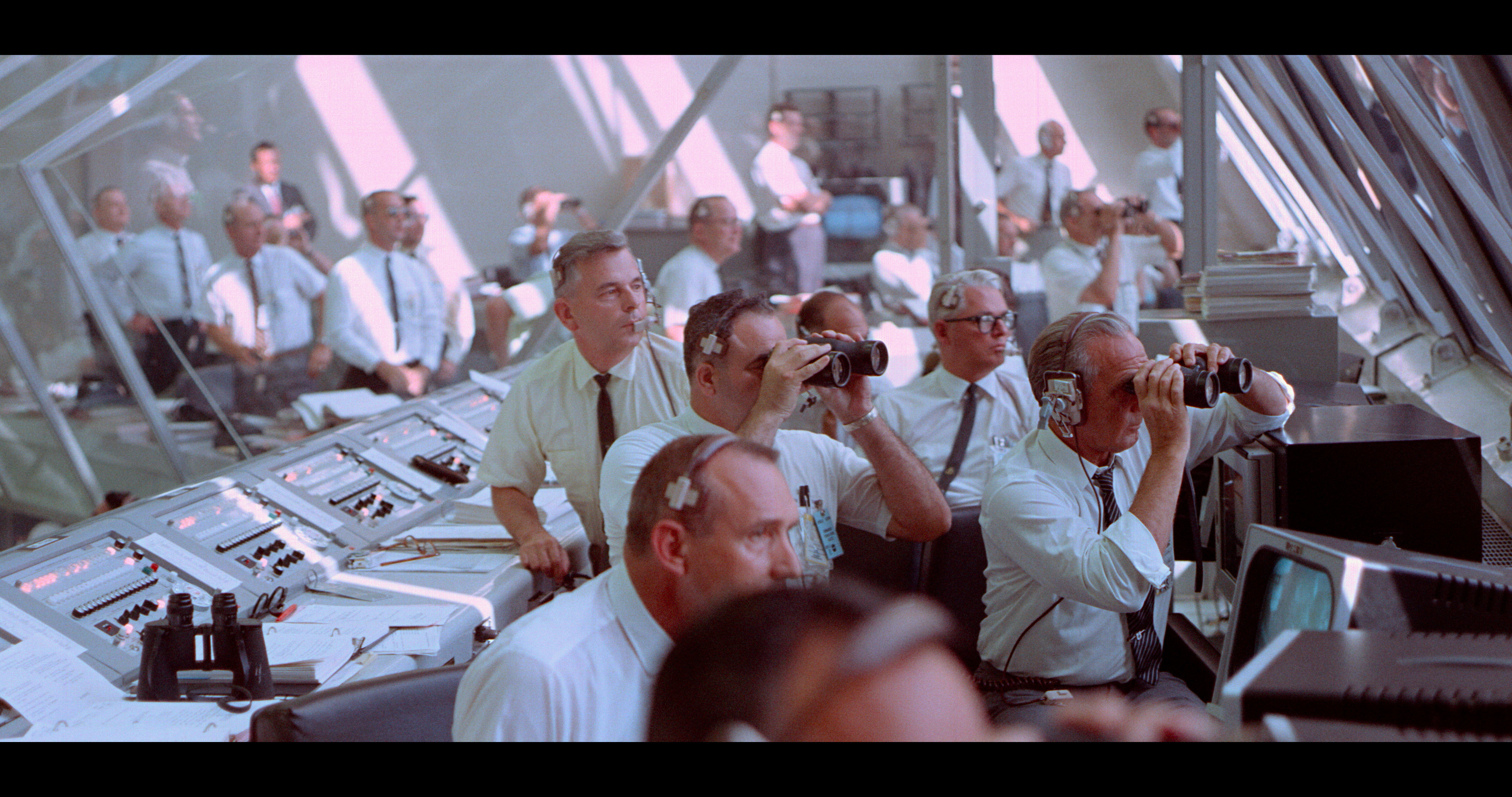 HULLFISH: Do you find the key to editing with Premiere is to keep your sequence count down?
HULLFISH: Do you find the key to editing with Premiere is to keep your sequence count down?
MILLER: Yeah I think so. I did find as it got higher — as the file size got higher with the project — it would just take a long time to save. I don’t use auto-save. I’m one of those guys that’s constantly hitting the save button. So waiting for something to save that long is infuriating because I like to work very quickly, but keeping that file size down was the key with Premiere.
HULLFISH: Tell me a little bit about the schedule. I mean, just listening to 11,000 hours of mission control audio…
MILLER: 11,000 hours was just the guys in mission control talking on the loops and then also talking to the capsule or the lunar module and then in addition to that you had onboard audio probably 5,000 hours of that. Plus the flight director’s loop as well. We’re still actually in the middle of it even now because we’re doing filmouts for IMAX plus the broadcast version that I’m editing for CNN. The CNN version comes out on June the 23rd. The theatrical version is kind of at the end of its life, though they’re talking about bringing it back at the end of the year. Then we also have the science center museum version which is basically a 40-minute version of the feature version which will be exclusively for science centers and museums. Places like the National Air and Space Museum — that’ll be out on May 17th. That version is called Apollo 11: The First Steps and will be on about 100 IMAX screens worldwide.
HULLFISH: Talk to me about finding the story. There was so much time preparing and building these giant timelines, but where was the story in the midst of all that content?
MILLER: Where we started was to actually read all the autobiographies of the astronauts. Everyone knows about Apollo 11, and I had some cursory knowledge because of working on Apollo 17. What stood out to me initially was just the technical achievement. I’m a big fan of films that are able to show audiences where you are geographically within a scene or space. Denis Villeneuve and his editor are amazing at it in the latest Bladerunner. In one shot he’s able to articulate space. In one shot he’s able to foreshadow a fight that’s about to happen, so you get an idea of exactly the dimensions of the room, what’s happening — so when he goes into all the close-ups it’s not so jarring. I apply the same principle with this film. It was always amazing to me to see the articulation, the attitude of the spacecraft — what they were doing once you got into space? Or where were we in a given place during the launch?
Trying to move throughout different people having a shared experience — and knowing where you were in that — whether it’s a subconscious thought process on the part of the viewer, but it was very specific to the way I like to put together a film. A lot of that came from just working with NASA and their history department and MIT did all of the flight dynamics works on the Apollo missions, so reading the diagrams — how things were presented and then reading the astronauts’ biographies.
One good example is the translunar injection maneuver which is NASA’s fancy way of saying they’re going to light the candle and go to the moon after they’ve done a couple of turns in orbit around the Earth. Everyone that describes that — that’s an Apollo astronaut — for the most part, they all described this incredible experience of the J2 engine lighting on the dark side of the earth and they used to call TLI into sunrise. In fact, Armstrong on the onboard audio says, “we’re going right over the Terminator” meaning the imaginary line on the earth from the dark into the light. And I always wanted to depict that. I’d never seen it depicted in a fiction or nonfiction film. But the astronauts talked about how extraordinary it was, and so, working with my archive producer Steven Slater — who is based in the UK — we found a piece from another Apollo mission that we could fill in the gap. We got to show that to Buzz Aldrin and Michael Collins and ask them, “Is this what it looked like?” And they agreed that it looked exactly like that.
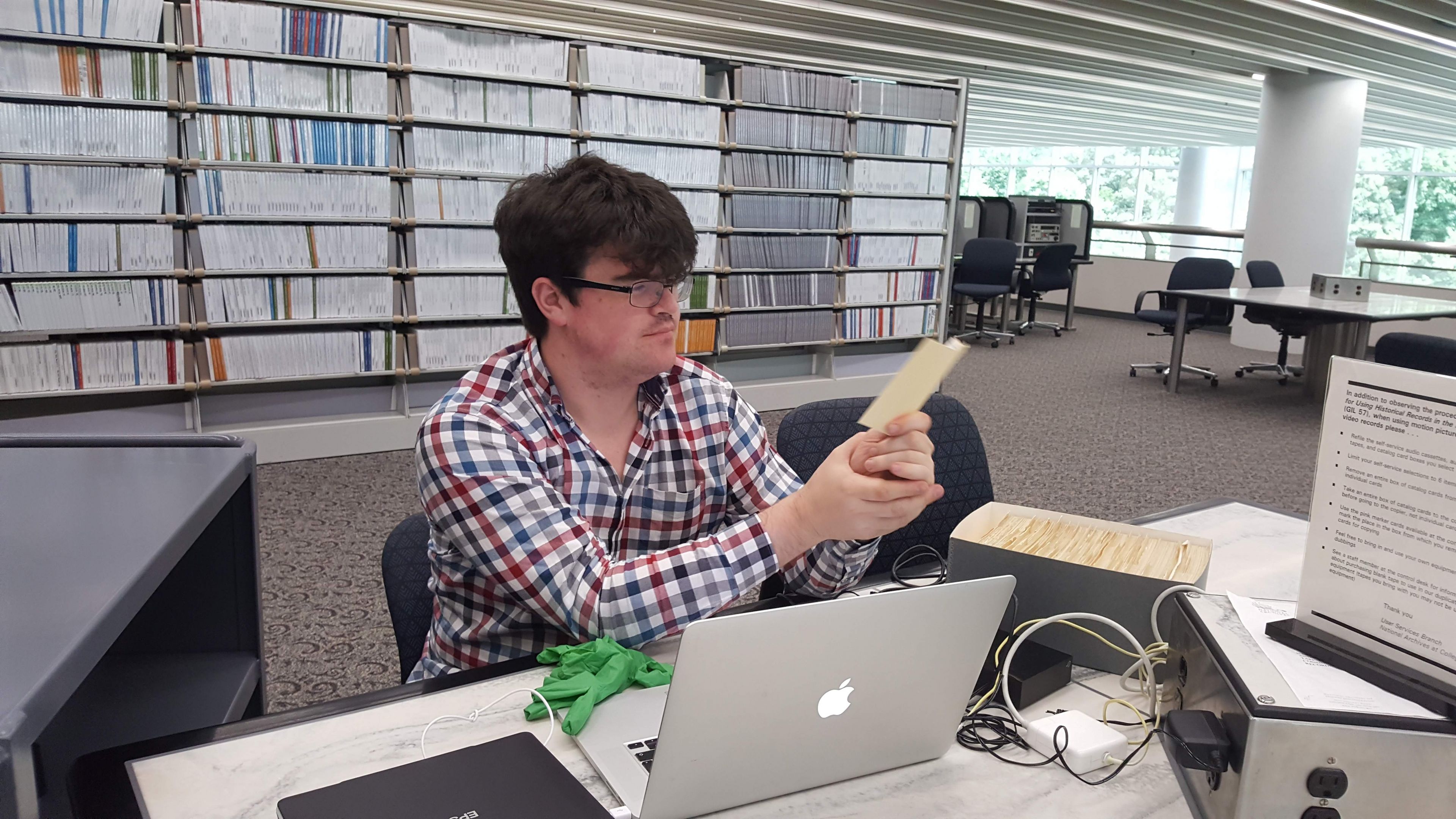
We did some similar things with some of the things they talk about in the book. Neil Armstrong had been asked about his most indelible moment from the mission. For Neil, it wasn’t setting foot on the moon or even returning home safely, but it was seeing the moon from about a hundred thousand miles out, and there was a solar eclipse happening around the moon and they didn’t shoot it on Apollo 11 with their 16mm camera. They didn’t take any stills of it, but we had one from another Apollo mission. We showed that to the guys on the mission to confirm that that was an approximation of exactly what it looked like and we were able to design a scene around that.
Then, just going through the audio — we had to use a divide and conquer approach — once we got the 30 track mission control audio synced, we just took turns listening to it for things that would be of interest, and Tom, my producing partner, just had a knack for it. He found all this amazing stuff. For instance, they were talking about Ted Kennedy’s Chappaquiddick accident that happened a couple of days before the mission, so the mission control guys were talking about that. So I was able to design an entire scene. We also had Walter Cronkite talking on a news broadcast and added that connection into mission control. They were saying that everyone’s forgotten about Apollo because they’re so focused on Chappaquiddick.
Tom actually found an amazing song that the guys played in space. They had this cassette player on board and they would routinely listen to music — all the Apollo astronauts did — Buzz Aldrin at one point says, “Hey, you want to hear some music?” and turns on the cassette deck. A few hours into it there was this amazing song — I’ve listened to it a million times — and I’ve got great ears, but I can still barely pick it up. It took Tom a few days to figure out exactly which song it was. It was this amazing folk song called “Mother Country” by folk artist John Stewart — not to be confused with the comedian — but he was head of the Kingston Trio most famously and he recorded this amazing song that kind of became the soundtrack for all of us working on the project and we were able to include that in the film. We actually tracked down John Stewart’s widow and it turned out she was a huge supporter of space and John himself wrote a song called “Armstrong” and were friends with astronauts, so it was a really great connection. But that kind of goes back to the storytelling — just to find things that would propel the narrative in a unique way, but also to get out of the way of it. We had this amazing footage, and I think it’s very easy to over edit this stuff, but the 16mm camera Buzz Aldrin mounted in the lunar module and turned on during the landing is — I would argue — the most famous shot in cinema. There’s a reason why all three astronauts are American Society of Cinematographer members. So we show that footage as an unbroken shot.
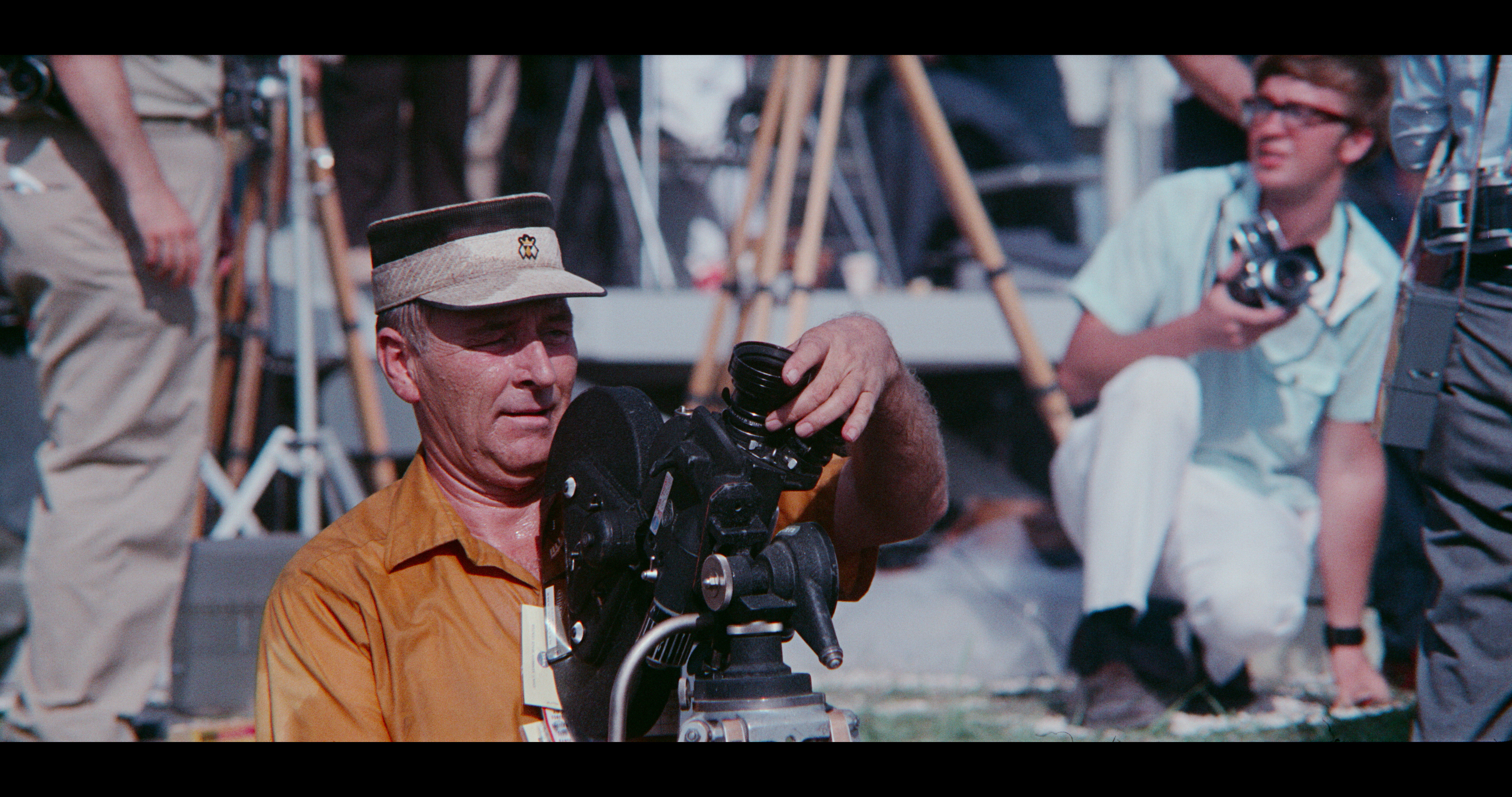 And then probably my second favorite shot is Michael Collins filming the lunar module coming up from the surface of the moon. And I think everybody tends to show that as this amazing miraculous thing, and it was, but it was very, very technical. They didn’t even know where they were on the lunar surface, so they didn’t know exactly the rendezvous coordinates if it was going to work. It was an amazingly intense time and — as we show in the film — if you look at the articulation of both spaceships, they really couldn’t see each other, so they were kind of coming in blind during the rendezvous. It was an amazing sequence that led to the docking of the spacecraft and then subsequently to be able to fire the rockets to get them home was equally as important because if that didn’t happen they would have been marooned. So it was just taking my time and slowing down scenes that were important to the mission and important to the safety of the crew — getting the guys home — but also showcasing things that maybe people hadn’t seen before.
And then probably my second favorite shot is Michael Collins filming the lunar module coming up from the surface of the moon. And I think everybody tends to show that as this amazing miraculous thing, and it was, but it was very, very technical. They didn’t even know where they were on the lunar surface, so they didn’t know exactly the rendezvous coordinates if it was going to work. It was an amazingly intense time and — as we show in the film — if you look at the articulation of both spaceships, they really couldn’t see each other, so they were kind of coming in blind during the rendezvous. It was an amazing sequence that led to the docking of the spacecraft and then subsequently to be able to fire the rockets to get them home was equally as important because if that didn’t happen they would have been marooned. So it was just taking my time and slowing down scenes that were important to the mission and important to the safety of the crew — getting the guys home — but also showcasing things that maybe people hadn’t seen before.
HULLFISH: You talk about finding all these stories. How are you keeping track of the stories that you have to work with? You’re building little compartments of stories that will then become the film. Is that kind of the idea?
MILLER: Yeah. When you see the film, it’s very modular. I knew that there was going to be approximately nine big sequences that we were going to do and they were all based on really, really technical life endangering maneuvers that happen. One would be the launch. Another scene would be Earth orbit. Another one was the translunar injection maneuver. So each one of these was very perilous. Any time you’re firing things in space it’s dangerous business. Every scene was designed around one of those things. And then also the support structure that it took for each one of those maneuvers to happen, we would try to highlight as much as possible. It was always irritating for me to watch Apollo documentaries — particularly if they were on TV — where you would routinely see guys in a blue shirt and then two seconds later on the same day he’s in a white shirt. So we tried to avoid that as much as possible.
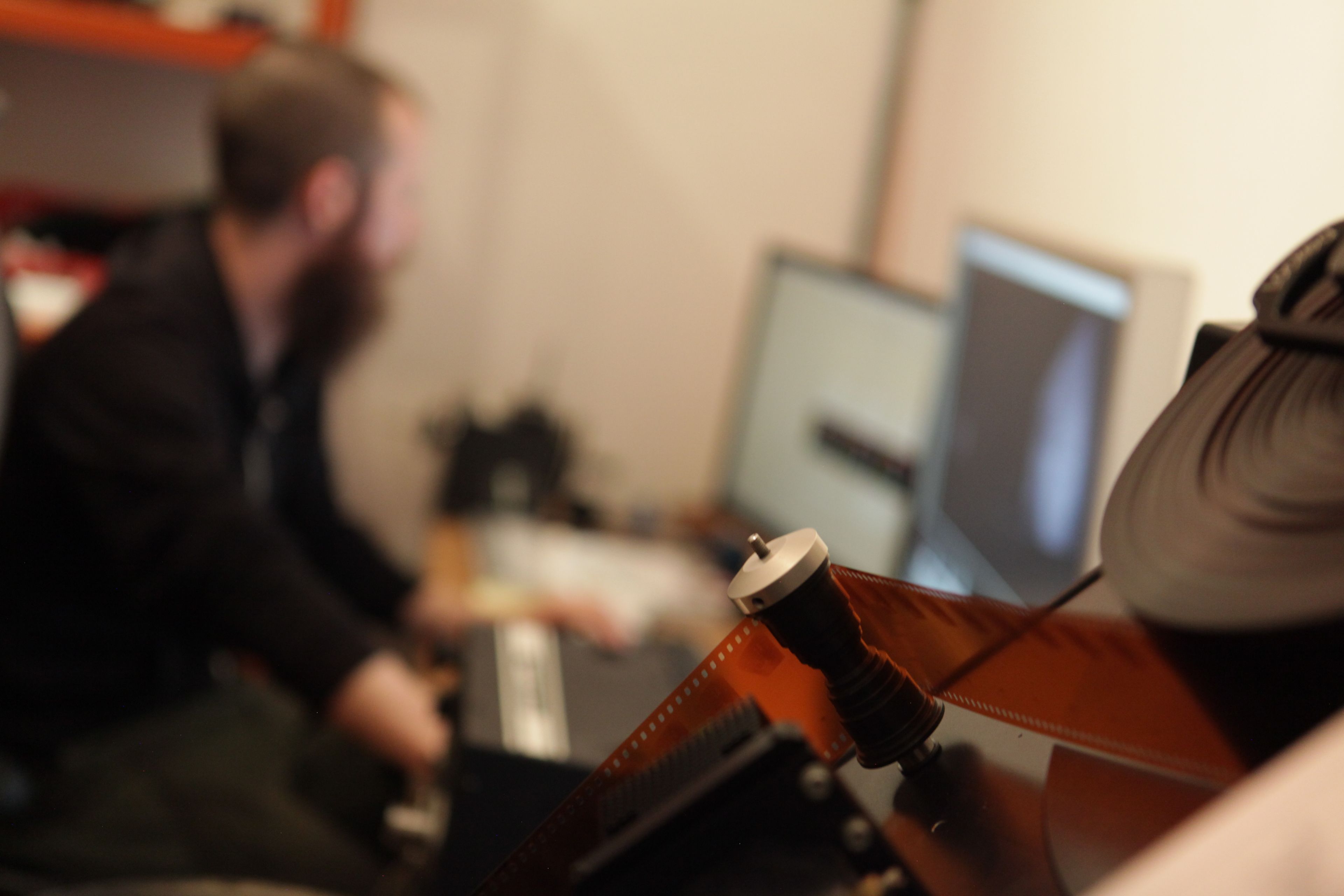 Probably some of the most amazing work on the film was actually done by my archive producer, Steven Slater, who actually really jumpstarted the entire project. The mission control footage itself had no audio on it. So Steven, during the early Apollo missions — the first three or four — they didn’t have any sync sound. The later ones did — the J missions — but the first ones did not, so Steven, who spent a large chunk of his career taking audio from the quarter inch and the one-inch tape of loops of mission control and syncing them up. A lot of times you’re just lip sync. You might know a day that things happen but it’s a complete cluster as far as how the actual reels were assembled. Ultimately when they were printed. The cameraman shot with these Arri S cameras. There were usually two cameras in mission control and they were just on/offing the camera. Putting one down, picking up another. No timecode. If you were lucky maybe you could see the mission control clock in a corner and then it would tilt down to somebody saying something, but mostly it was just Steven reading the lips of the mission controllers. He had actually taken all the film after we had scanned all the new footage and filled in the gaps with all the air to ground. When we started, he probably had dozens of clips synced up, and by the end, he had them all. It was incredible. It took years to do. He was able to take every stitch of footage that we had — whether it was 65mm or the 16mm from those two camera guys and put sound to it. So I was able to look at it really for the first time and be able to see exactly when things happened.
Probably some of the most amazing work on the film was actually done by my archive producer, Steven Slater, who actually really jumpstarted the entire project. The mission control footage itself had no audio on it. So Steven, during the early Apollo missions — the first three or four — they didn’t have any sync sound. The later ones did — the J missions — but the first ones did not, so Steven, who spent a large chunk of his career taking audio from the quarter inch and the one-inch tape of loops of mission control and syncing them up. A lot of times you’re just lip sync. You might know a day that things happen but it’s a complete cluster as far as how the actual reels were assembled. Ultimately when they were printed. The cameraman shot with these Arri S cameras. There were usually two cameras in mission control and they were just on/offing the camera. Putting one down, picking up another. No timecode. If you were lucky maybe you could see the mission control clock in a corner and then it would tilt down to somebody saying something, but mostly it was just Steven reading the lips of the mission controllers. He had actually taken all the film after we had scanned all the new footage and filled in the gaps with all the air to ground. When we started, he probably had dozens of clips synced up, and by the end, he had them all. It was incredible. It took years to do. He was able to take every stitch of footage that we had — whether it was 65mm or the 16mm from those two camera guys and put sound to it. So I was able to look at it really for the first time and be able to see exactly when things happened.
HULLFISH: I loved the scene of the flight surgeon announcing the heart rates of all of the astronauts during the launch. How was that stuff organized?
MILLER: That was great. I couldn’t believe we stumbled on that one. How could you not use that one?
So each day — and then within each day — everything that was shot large format would be on V1. then on V2 would be the 35mm and v3 was the 16mm.. so the quality went down as you moved up in the video tracks. If I was messing around with a scene I wouldn’t create a whole new sequence, but just at the tail end of the sequence I was working on, work on it there.
HULLFISH: Let’s get back to the organizing principles. Maybe even outside the NLE. Did you have a big board with PostIt notes or index cards or did you have a database?
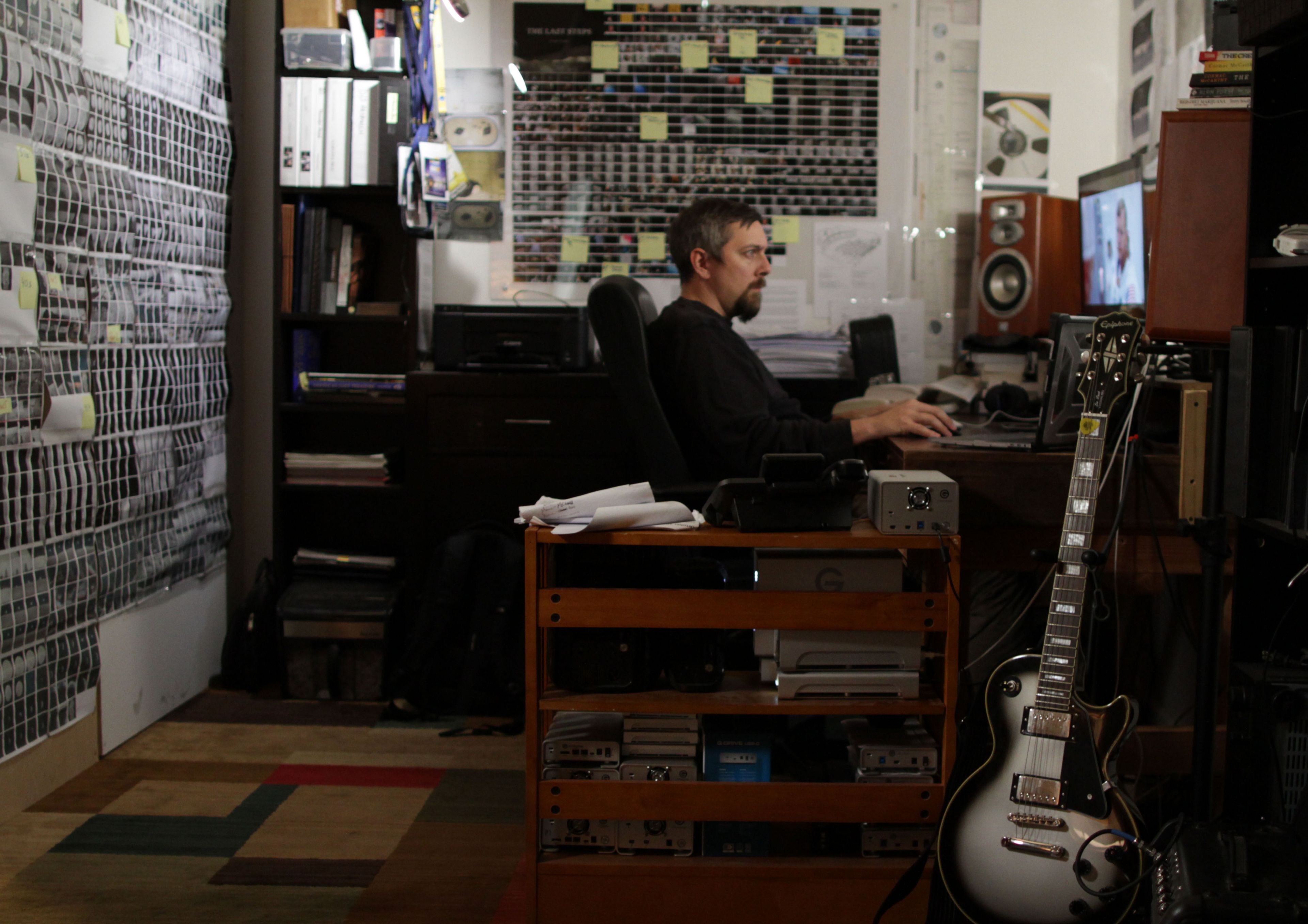 MILLER: If you were here, behind me in my edit suite, I have every single image that’s been printed out from the mission. It’s chronological, which is great. It basically looks like the room from A Beautiful Mind. I really saturated my office walls with everything to do with the mission. It looks kind of crazy to me right now but it all made sense when I was editing the project. One of the most useful things was a map of mission control. Knowing where all the guys sat and knowing at what time each guy started his shift. So I actually have a legend that has an image of Mission Control — you see where the retro-fire guy is, where the flight director sits, where CAPCAM is — all the different positions. And we have the shift changes where everything happened.
MILLER: If you were here, behind me in my edit suite, I have every single image that’s been printed out from the mission. It’s chronological, which is great. It basically looks like the room from A Beautiful Mind. I really saturated my office walls with everything to do with the mission. It looks kind of crazy to me right now but it all made sense when I was editing the project. One of the most useful things was a map of mission control. Knowing where all the guys sat and knowing at what time each guy started his shift. So I actually have a legend that has an image of Mission Control — you see where the retro-fire guy is, where the flight director sits, where CAPCAM is — all the different positions. And we have the shift changes where everything happened.
I wanted to know individual names, so when you watch the film we actually introduce Dave Reed who is the retro-fire guy or Bruce McCandless — everybody seems to know who Gene Kranz was from Apollo 13 and he was the flight director during the landing on Apollo 11 and certainly the dean of flight controllers but there were four other ones that were responsible for the safety of the mission and did a phenomenal job. So I have all of them listed out and then also when you get to the lunar surface where everything was. Going back to the transcript — which became our script — we found a lot of discrepancies with historical records, so a big part of our work was to do a lot of time remapping not only with audio but some of the footage needed it as well because a lot of the cameras that they were utilizing used variable frame rate. Also some of the television transmissions — we got those to exactly where they were timewise.
Current thinking was that when Buzz Aldrin and Neal Armstrong were on the surface of the moon, they were out of communication for a certain amount of time. Our work showed that they were never out of communication and we were able to get the mission clocks just right from our work, and also correct some of the official transcripts that have been floating around. That was a really important part of our project. It’s really the work of volunteers like ourselves and all the people that came before us and all people that come after us who track all this stuff. The great thing about working on a space film is that they’re on a clock and we’re on a clock, so as long as I can get things synced up it became very easy in the edit suite to be able to just pick and choose what I wanted. So much of this type of film — going back to the story — is about transitions. How do you get in and out of a scene? That was always a key aspect for me.
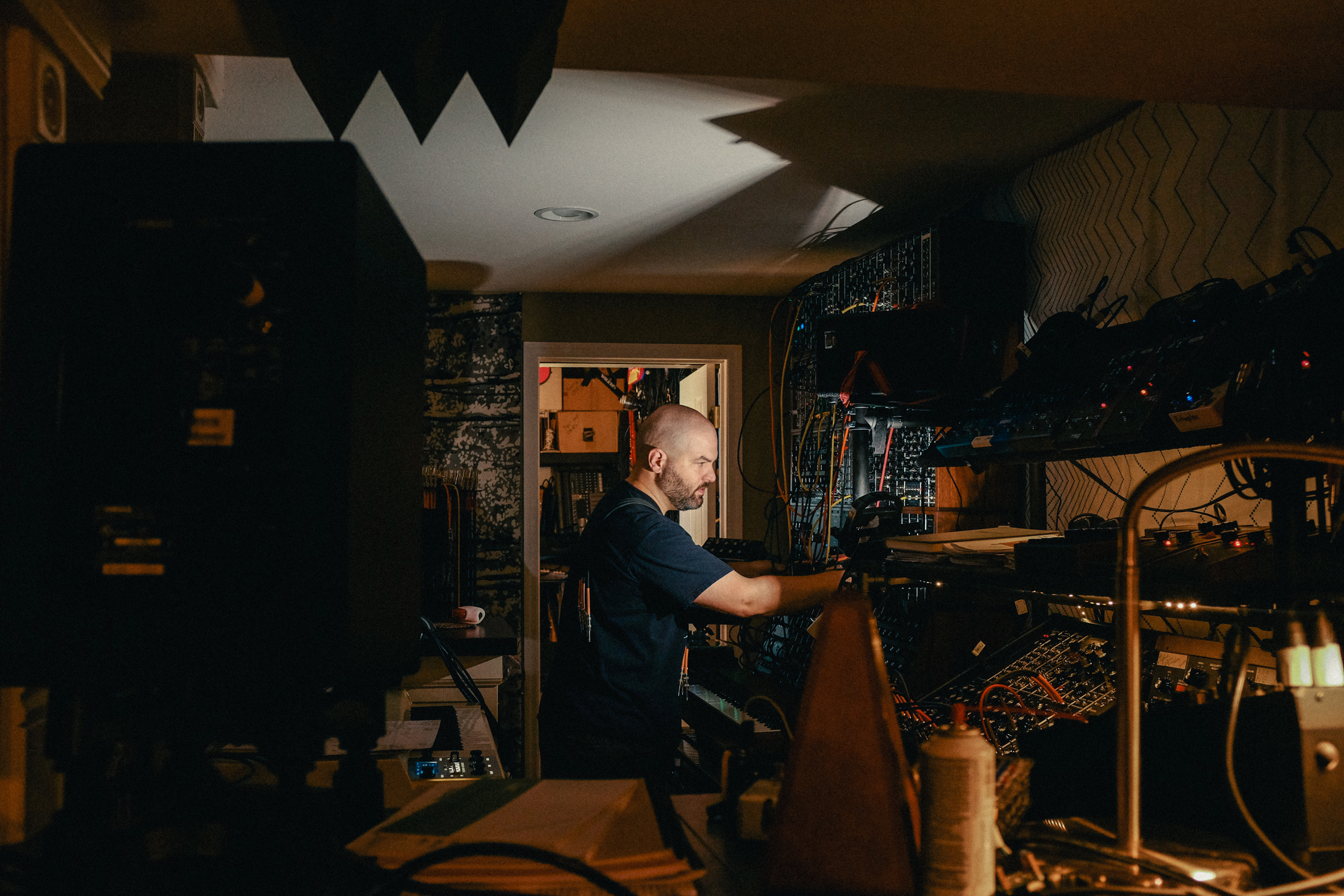
My longest collaborator is my buddy Matt Moore. I’ve known him since we were kids and I utilize his music to keep me honest in the edit. He did a period score for this — primarily on a 1968 Moog synthesizer reissue. But he’s a guitarist by trade — though a multi-instrumentalist. He gave me this little guitar riff on ukulele actually.
HULLFISH: There’s a very high-tech Apollo 11 kind of instrument.
MILLER: (laughs) Right? I was just joking with him recently because even though he didn’t know this, I kept it as a muted track. If I ever got lost in the edit I would go back to that because it had a certain cadence to it that kind of kept me in the rhythm of the edit. It was always on the very bottom of the timeline and got me through a lot of those tough transitions.
HULLFISH: I saw a YouTube video about him creating the score. Was he always feeding you music throughout the production?
https://www.youtube.com/watch?v=jD8FiP8jwjY&t=7s..
MILLER: Yeah. He does a lot of traditional scoring from iFilms. I’ll temp in stuff and give it to him and then he’ll blow my mind with something better. From the very beginning on this, he said he wanted to use instruments from the period. So he ordered this Moog synthesizer — and there were only twenty-five were made — these 1968 reissued Moogs. He didn’t know how to play it, but kind of like all of us on the team who saturated ourselves in the story, he saturated himself in the synthesized music of the 50s and 60s and just became a real super fan of it and just really got his masters degree on it. He’d deliver these hour-long Moog compositions which were terrifying at first but then just became this amazing way to work.
I could basically use all of an hour or two-hour long composition — which was very complex, very moving and had different layers to it, different time signatures — and I was able to structure scenes around it and that became the bedrock. And it was just a wonderful way to work, in fact, we said we’re always going to work this way in the future because it allowed me to really slow things down and play with it and I’m basically temping in the music of my composer. So if I gave specific notes at least he could go back and get it in the ballpark and layer in some things, but it was just a tremendous piece of work that he did. I was just so proud of him.
HULLFISH: You mentioned transitions and how important those were getting in and out of scenes. Could you talk to me a little bit about transitions and anything specific — a transition or two that you remember or were really proud of?
MILLER: I think a really good example of that would be during the lunar landing sequence. Initially, we didn’t want to have any music on it. And we cut the whole scene together and there was just something missing about it. When they landed I knew that I wanted everything to just go away. When you’re on the lunar surface you just enter into this entire existence of nothing. You are in the vacuum of space on the lunar, surface, much as how the astronauts experienced it. Initially, the landing had a very similar approach. It was all static and air-to-ground and a bunch of stuff from the on-boards. The transition between the two was tough. I thought it was going to be very easy, but to find exactly when that line was — which I thought was going to be the moment of touchdown. But as it turned out it wasn’t that easy. That’s not how it happened in real life. They landed and even though in the Lunar Module they knew they landed, mission control didn’t. They had telemetry that said that they did, but there were these tense moments — Did they make it? Did they not make it — and Neil Armstrong and Buzz Aldrin had just an amazing amount of housekeeping to do. They’re turning off switches and calling out commands, so to try to transition that was tough. And then ultimately what we ended up doing was putting the music on the landing — which has actually become one of my favorite cues in the film.
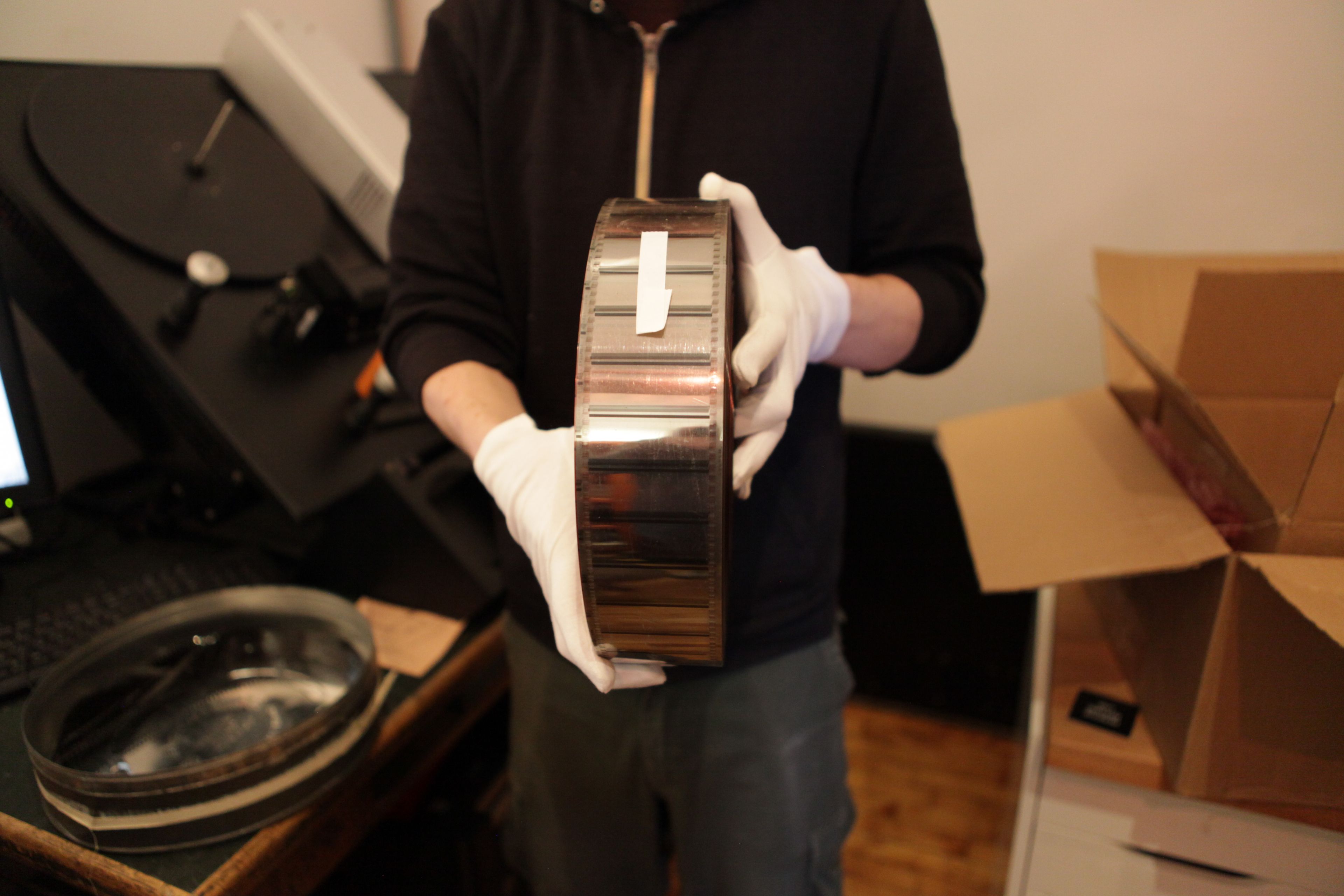 Another transition was after they get back into lunar orbit and they have to light the candle home during the transearth injection maneuver that was a difficult one because we had a music cue initially that was dramatic, but it was really intense — intention-driven. The scene ends with Charlie Duke — the CAPCOM — throwing his arms up in the air and saying, “Hallelujah” once they acquired the signal and they know that the guys have the nose of the command module pointed home and it looks like everything’s going to be OK. They’re going to get out of lunar orbit and they’re going to get home safe. The music was not taking us into that feeling. So it was a very simple fix, though it took us a month to figure it out: we just had a simple drone that went from a very intense drone to a very melodic drone and it just fed right into that celebration that was going on in Mission Control. To get in and out of those scenes initially were difficult.
Another transition was after they get back into lunar orbit and they have to light the candle home during the transearth injection maneuver that was a difficult one because we had a music cue initially that was dramatic, but it was really intense — intention-driven. The scene ends with Charlie Duke — the CAPCOM — throwing his arms up in the air and saying, “Hallelujah” once they acquired the signal and they know that the guys have the nose of the command module pointed home and it looks like everything’s going to be OK. They’re going to get out of lunar orbit and they’re going to get home safe. The music was not taking us into that feeling. So it was a very simple fix, though it took us a month to figure it out: we just had a simple drone that went from a very intense drone to a very melodic drone and it just fed right into that celebration that was going on in Mission Control. To get in and out of those scenes initially were difficult.
HULLFISH: When did you first start on the project — and you just mentioned that you’re still really still working on it now.
MILLER: I think most editors can relate to this story: We met with government officials who came up to see if Final Frame could be trusted with their priceless archival film and the owner of Final Frame turned to me and said, “If we wait six months we’ll be able to scan in 16K instead of 4K.” All these eyeballs went to me and I knew that that would lose me six months of editing. Because it was new technology there was no guarantee that they were actually going to be able to make it happen in six months. But it all worked out in the end. So we started at the tail end of 2017 and then because we really didn’t know what was on a lot of the large format footage, that was my first thing to rifle through. We prioritized reels based on descriptions and what little information we had. And I wanted to cut the entire film linearly, so we just dealt with everything that happened in the first few days of the mission. The minute that stuff got off the scanner it was immediately couriered over to me on hard drives and I would start cutting it right as things were coming off the scanner. I’d considered cutting at Final Frame, but it seemed like it was just going to be chaos over there with all of the footage coming in. So it was nice to just be in a dark room by myself and get a hard drive and just edit every day. It was really exciting with new things coming in every day.
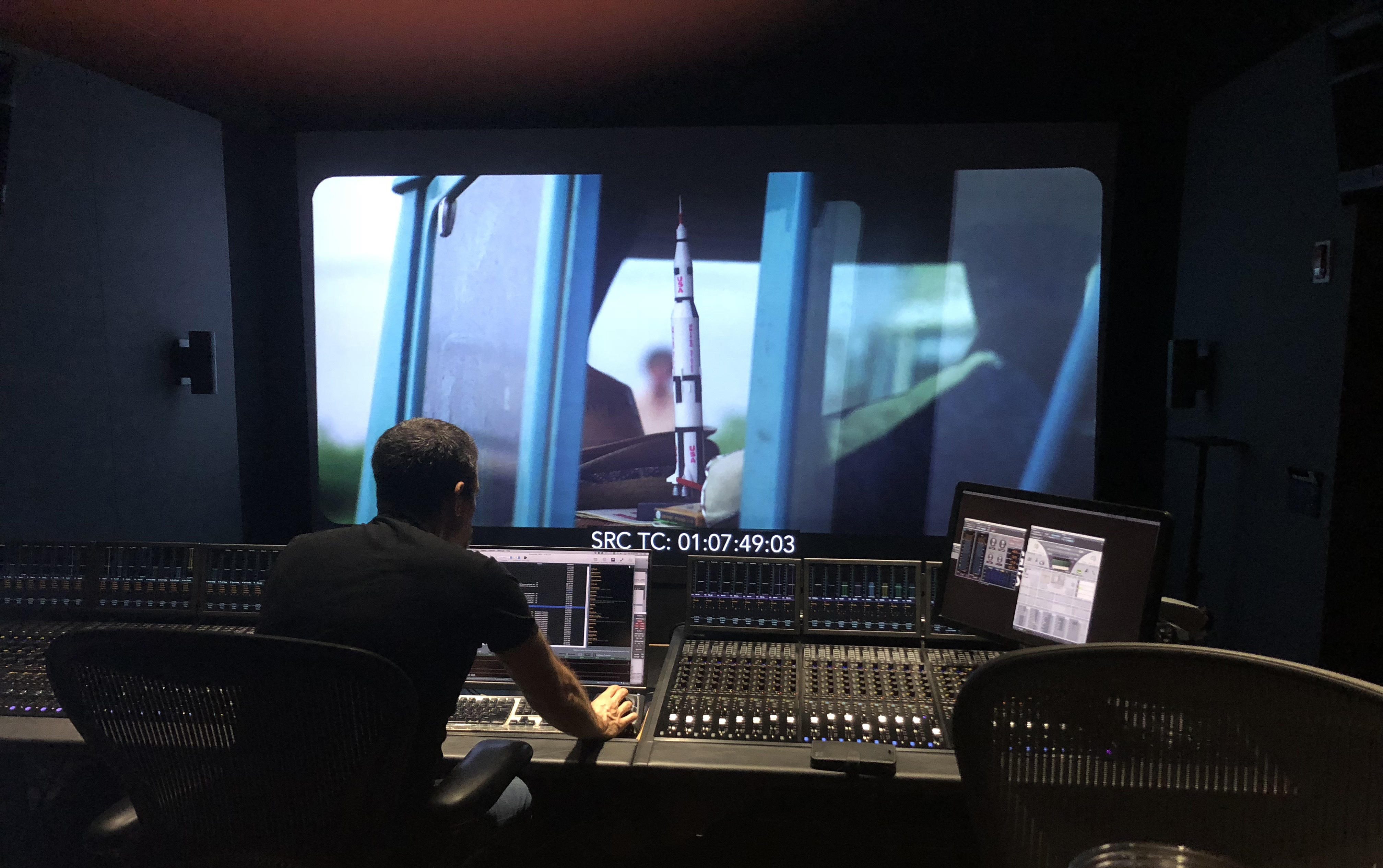 HULLFISH: And what was your process as the stuff came in from Final Frame?
HULLFISH: And what was your process as the stuff came in from Final Frame?
MILLER: The footage had dates, so if the can said July 16, 1969, that’s my Day One. Luckily, pretty much every single reel had a date. There was a lot that hit the cutting room floor. There were some large format things that were in the training. There was a world tour that happened. So when those things came — that weren’t a priority — I would certainly rifle through it to see if there was anything that we needed. Actually, the end credit sequence was kind of birthed by looking through all that material. So the funnel of data started with a master scanning sheet which was a shared file that the archivist at the National Archives had access to. The post supervisors at Final Frame and then our team as well. Our experts — like our archive producer in the UK — who worked remotely were able to organize all of that stuff and teed it up for me.
HULLFISH: I’m interested in this idea of scenes. Did you just completely go linearly? I remember one of the scenes in the movie was the astronauts were approaching the launch site at the same time there were technicians trying to take care of a leak.
MILLER: When the rocket takes off they say “tower clear” and at that moment the command of the mission shifts to Houston. But before that, it’s all down in Florida at Kennedy in the firing room. So there’s a director and hundreds of people that are all on these loops. Probably the most famous of them — and we were shocked when we heard him — because no one had heard his voice before, was Gunter Wendt was the pad commander who, in Apollo 13 Tom Hanks as he’s getting suited up jokingly says “I wonder where Gunter went?” We had footage of him and I couldn’t believe people didn’t utilize it, but our archive producer are on the back of one of these reels. We found a bunch of CCTV footage — that was part of his personal collection — of the Astro van going through the pad. NASA had these CCTV cameras located all over the launch pad and on the way to launch. I just thought it was a terrific little way to kind of showcase the journey of these guys going out to the pad. They get suited up. They get in this van and they get driven out and they sit on top of this rocket. Well, that entire journey was just fascinating to me from a psychological standpoint from the astronauts perspective. The weight of the entire world is on your shoulders, You drive eight miles out to this pad, then you’ve got to get into an elevator and go three hundred and thirty feet in the air and then go sit on top of this rocket that has been fired only a few times!
I kept a stat next to my edit suite that of all the manned and unmanned missions to the moon prior to 1969, only 48 percent of them were successful. So I’m sure that those guys didn’t know that. But I wanted to convey that during that sequence that this was not a foregone conclusion that it was going to be successful. So as we were looking through all of this footage, I’m seeing these guys in these hardhats working on this line and listening for hours to the public affairs officer at Kennedy — it was the voice of Jack Kane, who had this big, thick Queens New York accent, he was just a character. He was kind of a Harry Caray larger than life personality. He’s saying that there’s this hydrogen leak that’s happening, and he’s so nonchalant about it, saying, “Well, we’ve got a team coming out and they’re going to tighten some bolts around this hydrogen leak” and at the exact same time he’s describing the Astro van pulling up and the guys are getting on the elevator. So it just turned out we had the audio of it happening in real time and we also had this closed circuit television footage as well.
HULLFISH: And you used that as if it was CCTV footage, using multi-screen or split screen, right?
MILLER: Yeah. I was a fan of those early films that did cut down of parallel time — pre — Woodstock and the pre — Grand Prix style which the Francis Thompsons and the editor on that project that I mentioned before — To Be Alive — was Theo Kamecke and he went on to direct a classic — Moonwalk One — which documented the Apollo 11 mission and a lot of the footage that we are utilizing, he was directly responsible for. It was always in the back of my mind as we were working on that to tell that through the use of split-screen.
HULLFISH: When you were building those scenes did you pull it out of one of these nine-day sequences? Were you creating a timeline just for the scene?
MILLER: I just have a bin that says footage and within that bin are all the different sources of footage. I really don’t like to inundate myself with sequences. I have a very good memory when it comes to numbers and shots, so when the guys would send me the proxy files, they would reference the actual identifier of the reel. Usually, it would be a seven digit alpha-numeric, like 255 — PM28. And there were probably about 200 of those from the large format. I had that for the 65mm 5 — perf and then I would have one for 70mm 10-perf. And there were probably 100 more of those. And I would just memorize them. I just saturated myself with the footage and kind of memorized it at all. Then I had a bin for audio and that actually worked in our favor to use Premiere because Ben in Toronto — when he was syncing all the 30-track stuff, used Adobe Audition. He just found that that was an easy way to sync everything and it just naturally worked out that I could import export very easily within those Adobe products.
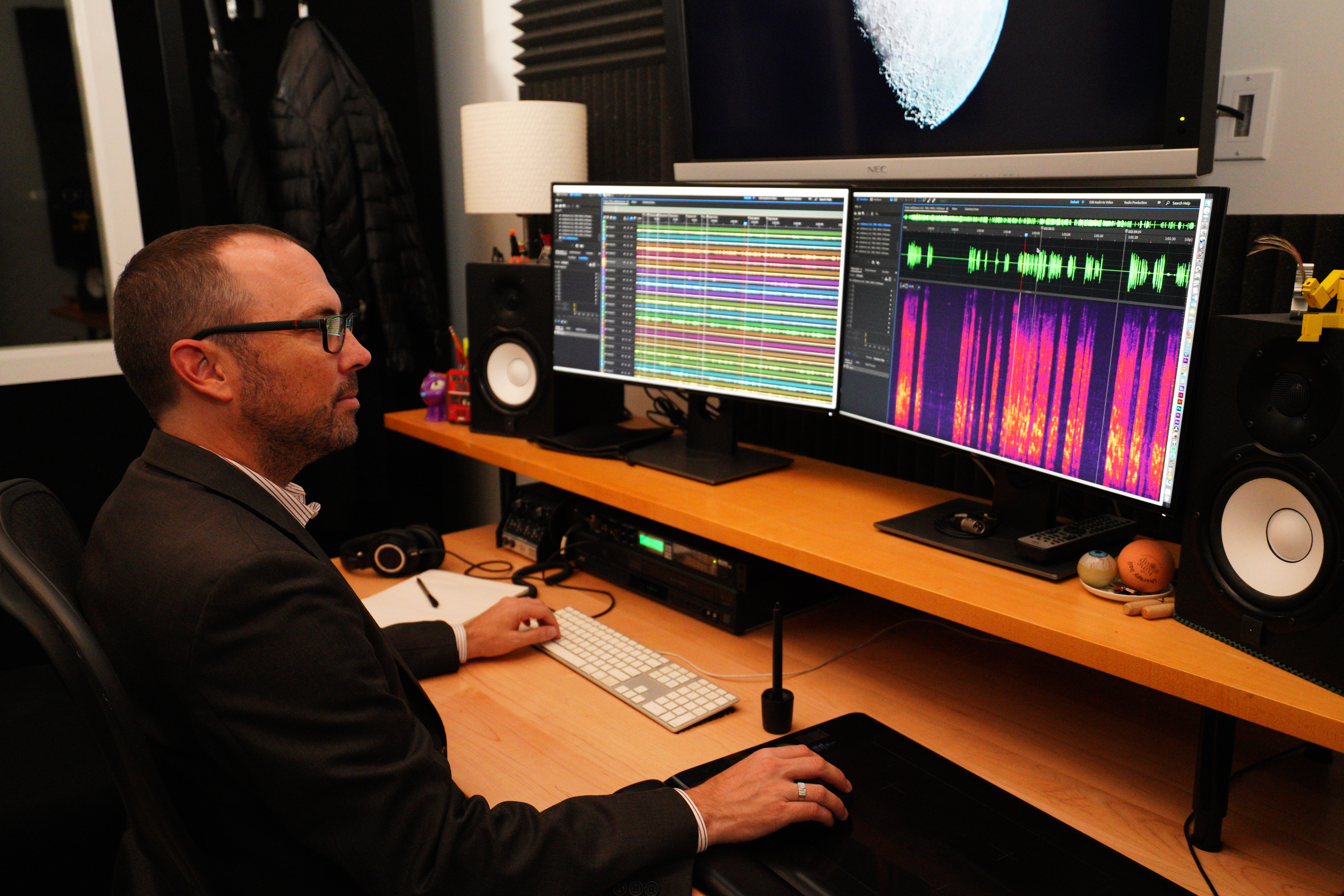
When the audio was digitized it was never synced up. So we had 11,000 hours — one clip would be an hour, another clip would be three hours, and another would be 10 minutes and you didn’t know what day it was — you didn’t know anything. So he worked a grad student in Germany who had developed an algorithm to look at waveforms and luckily they did have a timecode carrier on the first strike so they could look at that, but they basically thumb-printed this off-carrier signal. We also needed pitch control, all this interleaving, there was hum that was introduced during the recording. We wanted to time-re-map it so it was synced exactly to the mission clock. He did all of that within Audition, and then we got a project file for each individual day and each individual tape itself. So the 30 tracks I believe were on 9 tapes representing each day. They were 1” tapes with 30 tracks. NASA only built two of these machines and one was built to service the other one in case it broke.
So they actually had these custom Soundscriber playback heads to be able to digitize all of it. It took years and years and years from the team at the University of Texas in Dallas. But when I got the Adobe Audition project from Ben, at any given time there would be 60 tracks that you could on-off, so I could listen to exactly who was talking at any given time. If a retro guy was talking to a back-room technician I could easily solo those two tracks and just listen to their conversations. There was a scene that hit the cutting room floor — that’ll be on the DVD extras — with a 25-year-old female that just popped up on a 30 track — which was so rare — it’s usually all these white crusty old men that are talking. She just comes on and is this very vibrant mathematician and it turns out she had this really important job. They asked her to run their math on the return trajectories which were off, and she basically stopped short of calling them a bunch of dummies, but in the span of five minutes just basically spits out all this math at them and why their numbers are wrong. And she became a flight controller that sat in the front room eventually during the Apollo missions. On 13 she was right there. Her name is Francis Northcut. They call her Poppy. It was a great little side story. Unfortunately, we didn’t have any footage of her. so we couldn’t really utilize her in the film. It just goes to show you the power of discovering little hidden things like that.
HULLFISH: What were you doing to get down to the story that you ended up telling from this massive archive of materials? What were some of your guiding principles for making those determinations of “This is going to make it and this isn’t?”
MILLER: I just wanted to see a movie that I wanted to see — that I really hadn’t seen depicted. I wanted it to be visually engaging — which certainly with the discovery of the large format material it was going to be. What are all those hidden moments that elicit emotional responses in people that can connect with this? I didn’t want it to be just about the astronauts. There were so many people involved. One of the things that always got me was — the last broadcast from space, and they did it all the time, was that the astronauts thanked all of the people that got them that far. Not just the people in mission control, but all the people that built the spacecraft. Hundreds of thousands of people. I wanted to do that in a way that could acknowledge those people without necessarily showing them. You realize that everyone that was in mission control working around the clock to make it a success — it was hundreds of people. So I think that combined with just seeing unique things. We scanned this image of a beautiful woman in the firing room and I just wondered, “Where did she come from?” Her name was Joanne Morgan.
She was the only female there that first time for Apollo 11. We didn’t have any audio but we had stunning visuals of her. Another was an African-American gentleman that was always shown in the front room of Mission Control. I’d seen him in other films, and I was trying to figure out where he sits because it doesn’t look familiar. It turns out he had this important job is more important than sitting in the front room. He was in charge of monitoring solar flares. The astronauts would give their radiation levels as they were traveling to the moon and it was his job to jot those down and also monitor our satellites around the earth that was monitoring the sun and if there was major solar flare activity they could alert the spacecraft and take evasive action. So we got to design a little scene around that. Also just going back to all the main things that happened during the mission. Just trying to stay on point with where you were in the mission in all those big moments.
HULLFISH: There’s also great stuff outside of NASA, of all of the spectators out on the beach in their RVs and on top of their station wagons and a great sequence of all of the VIP stands and Johnny Carson and famous people walking around.
MILLER: It was incredible. We had this great footage 8mm footage of Johnny Carson and Ed McMahon and Isaac Asimov and they’re all in a private jet, and they get to Kennedy — they’re having a good time — but just like everybody else, they got to get on the bus to go out to the pad. Even though you’re in the VIP section you kind of became a part of everyone else. Initially, we had started the film with that before we got access to all of the large format stuff. But you realize what a monumental time in history it was too, with Vietnam and the civil rights movement going on. There were protests happening down at the pad. You mentioned the RVs on the beach. This was happening in July and there was this endless fleet of VW buses which probably traveled up I-95 afterward and went to Woodstock a month later in August.
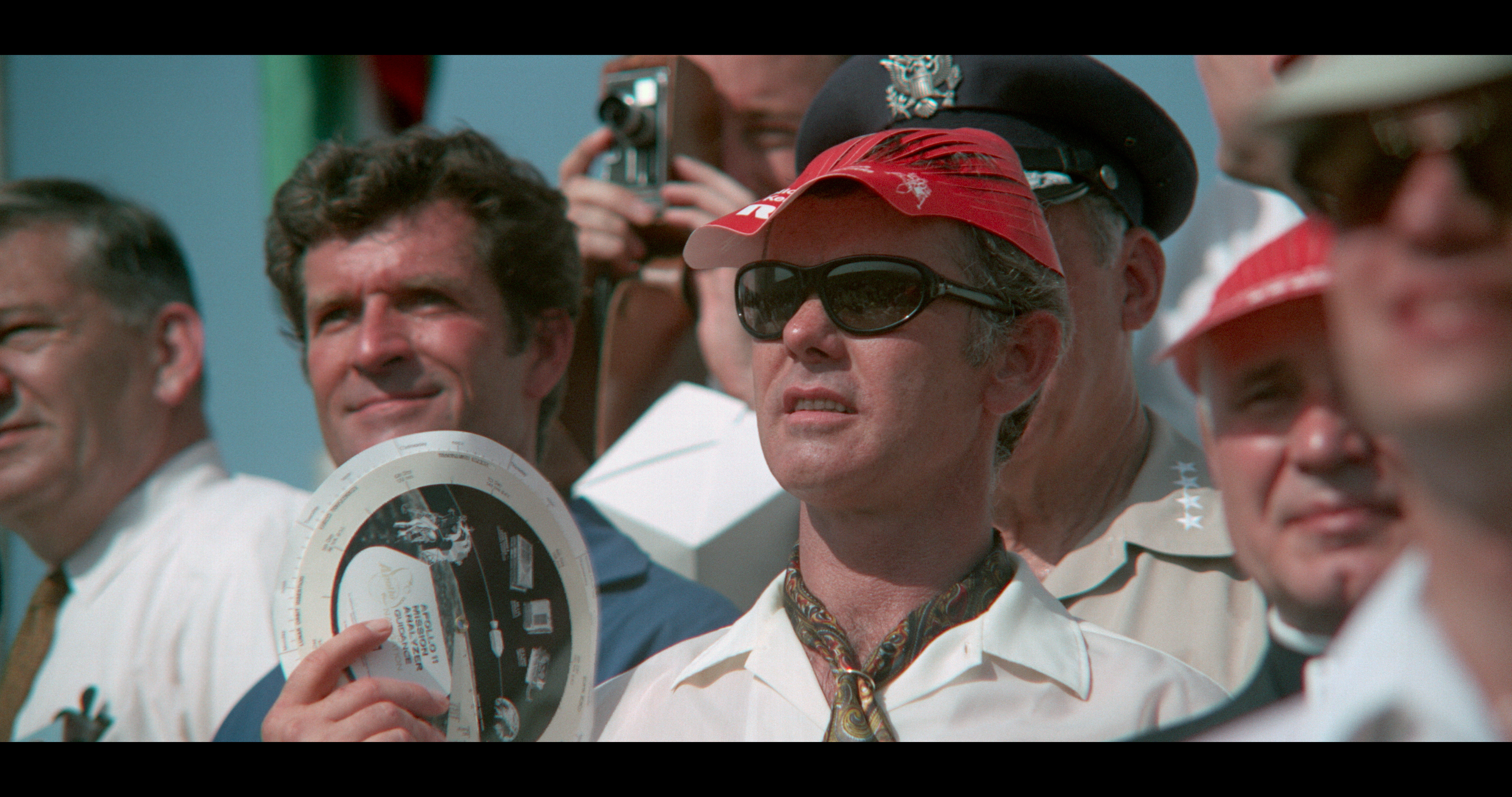 HULLFISH: It’s really interesting to me that there was a process of starting this movie with 8mm footage of Johnny Carson and then you realize, “We’ve got this incredible shot of the Saturn 5 rocket being rolled on the treaded transport.” You just have to adapt, right? You have to be open to saying, “We’ve got a better way now. We thought we had the right way before but now we have a better way.”.
HULLFISH: It’s really interesting to me that there was a process of starting this movie with 8mm footage of Johnny Carson and then you realize, “We’ve got this incredible shot of the Saturn 5 rocket being rolled on the treaded transport.” You just have to adapt, right? You have to be open to saying, “We’ve got a better way now. We thought we had the right way before but now we have a better way.”.
MILLER: Yeah. That’s the beauty of documentary and working with archival materials is to keep yourself open to the possibility that something out there might be better. I thought for sure we had the blueprint down of how we were going to do it. I had everything down to the minute. I knew that film was going to be ninety-six minutes back in the winter of 2017 then that all gets thrown out the window. But if you put yourself in a position to be open to that, you can make really good films.
HULLFISH: Do you think that’s one of your primary skills or talents — that ability to stay open to new material, new methods?
MILLER: Yeah I think so. I’ve been very lucky in my career. I’m not an old man but I’m not a young either. To see the transition of different technologies and different things. I’m proud to say my last two films that even though we’ve deployed some newer technologies — particularly on this one to deal with the large format footage — we kind of pride ourselves on using old school things. The beauty of working with the team at Final Frame and also IMAX is developing some newer systems where you can shoot on large format films or even large format digital and it’s not so inaccessible. We’re working on some things that are going to be exciting for a lot of filmmakers to be able to utilize — some newer stuff where you don’t need 20 million dollars to make one of these types of films. You can do it where it’s economically feasible.
HULLFISH: When you were looking at all this gorgeous large format scanned film, were you viewing it in 4K in your NLE? What kind of monitor were you using in your cutting room?
MILLER: Everything was 4K. In the Nucoda room doing the DI, that was all 8K. Another amazing part of the project was being able to test so much down at Smithsonian’s Air and Space IMAX screen. I put together the first 5 minutes of the film and we got to go down there and test. Then when I had the first 30 minutes we got to show it to the astronauts and their families. And that was certainly a wonderful way to work.
HULLFISH: When you were viewing in your home, you were viewing 4K?
MILLER: At home, my system was actually a MacBook Pro, so I would have half resolution but when I was at the office, I was full resolution multiple tracks within Premiere on a Mac trashcan.
HULLFISH
I really appreciate you filling us in on this fascinating project. Thank you so much for the time.
MILLER: Ok thanks. Bye.
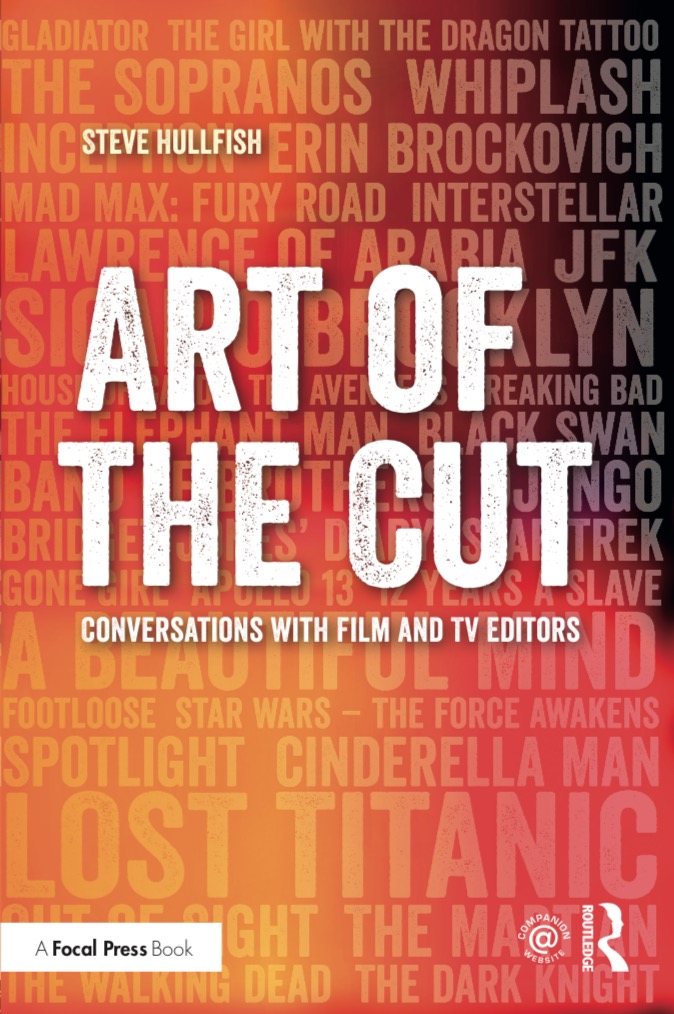
To read more interviews in the Art of the Cut series, check out THIS LINK and follow me on Twitter @stevehullfish
This interview will also be available as a podcast soon on anchor.fm.
The first 50 interviews in the series provided the material for the book, “Art of the Cut: Conversations with Film and TV Editors.” This is a unique book that breaks down interviews with many of the world’s best editors and organizes it into a virtual roundtable discussion centering on the topics editors care about. It is a powerful tool for experienced and aspiring editors alike. Cinemontage and CinemaEditor magazine both gave it rave reviews. No other book provides the breadth of opinion and experience. Combined, the editors featured in the book have edited for over 1,000 years on many of the most iconic, critically acclaimed and biggest box office hits in the history of cinema.

Filmtools
Filmmakers go-to destination for pre-production, production & post production equipment!
Shop Now